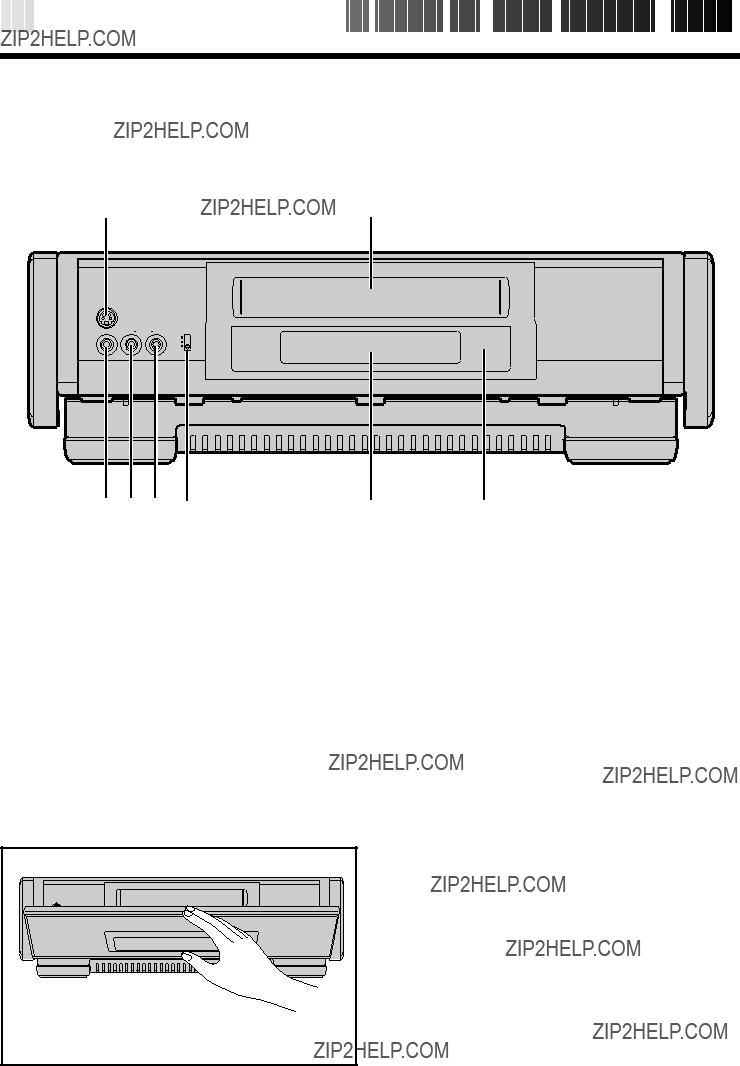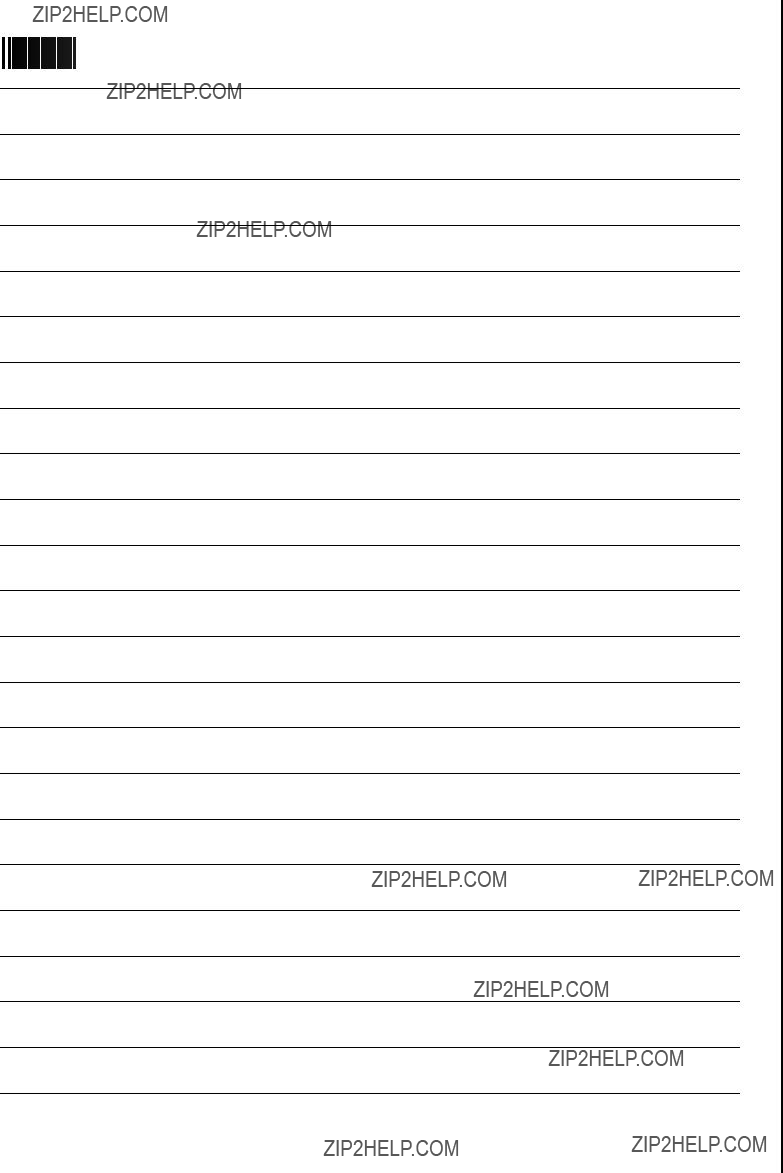D-VHS DIGITAL RECORDER
HM-DR10000EK
MTP
PAL
INSTRUCTIONS
2















































































 SAFETY
SAFETY FIRST
FIRST


Safety Precautions
The rating plate and the safety caution are on the rear of the unit.
WARNING: DANGEROUS VOLTAGE INSIDE
WARNING: TO PREVENT FIRE OR SHOCK HAZARD, DO NOT EXPOSE THIS UNIT TO RAIN
OR MOISTURE.
IMPORTANT
nPlease read the various precautions on p. 2 ??? 4 of this instruction manual before installing or operating the recorder.
nIt should be noted that it may be unlawful to re-record pre-recorded tapes, records, or discs without the consent of the owner of copyright in the sound or video recording, broadcast or cable programme and in any literary, dramatic, musical, or artistic work embodied therein.
IMPORTANT
Connection to the mains supply in the United Kingdom.
DO NOT cut off the mains plug from this equipment. If the plug fitted is not suitable for the power points in your home or the cable is too short to reach a power point, then obtain a proper safety approved extension lead/ adapter or consult your dealer.
In the unlikely event of the plug fuse failing be sure to replace the fuse only with an identical approved type, as originally fitted, and to replace the fuse cover. If the fuse fails again consult your nearest JVC dealer.
If nonetheless the mains plug is cut off remove the fuse and dispose of the plug immediately, to avoid a possible shock hazard by inadvertent connection to the mains supply.
If this product is not supplied fitted with a mains plug then follow the instructions given below: DO NOT make any connection to the Larger Terminal coded E or Green.
The wires in the mains lead are coloured in accordance with the following code:
Blue to N (Neutral) or Black
Brown to L (Live) or Red
If these colours do not correspond with the terminal identifications of your plug, connect as follows: Blue wire to terminal coded N (Neutral) or coloured Black.
Brown wire to terminal coded L (Live) or coloured Red.
If in doubt ??? consult a competent electrician.
CAUTION
n To avoid electric shock or damage to the unit, first firmly insert the small end of the mains power cord into the recorder until it is no longer wobbly, and then plug the larger end of the mains power cord into a mains outlet.
n When you are not using the recorder for a long period of time, it is recom- mended that you disconnect the power cord from the mains outlet.
nDangerous voltage inside. Refer internal servicing to qualified service personnel. To prevent electric shock or fire hazard, remove the power cord from the mains outlet prior to connecting or disconnecting any signal lead or aerial.
MTP
PAL
nCassettes marked "D-VHS", "S-VHS" and "VHS" can be used with this video cassette recorder. However, D-VHS recordings are possible only with cassettes marked "D-VHS".
nD-VHS is a new digital memory system that uses D-VHS tapes. D-VHS was developed as a memory system for multimedia applications that require storage for large volumes of information, such as for digital video.
nVIDEO Plus+ and PlusCode are registered trademarks of Gemstar Development Corporation. The VIDEO Plus+ system is manufac- tured under license from Gemstar Development Corporation.
Symptoms of dirty video heads:
cThe picture is not clear, or does not appear. There is no sound.
cMosaic (block) noise appears in the picture.
cBlack or mosaic horizontal stripes appear in the picture.
cThe picture stops (as if the tape is paused).
cA blank black or blue screen appears.
cThe picture is fuzzy. (VHS playback)
VHS playback
Early symptom
D-VHS playback
Use a cleaning tape designed specifically for D-VHS video heads (JVC D-VHS video head cleaner DFC-2) to clean the video heads.
cIn order to avoid misoperation, set "NAVIGATION" to "OFF" ( Z pg. 25).
cFollow the instructions that are provided with the cleaning tape.
If you still do not get a clear picture after using a cleaning tape:
cThe heads may be worn. Contact your nearest JVC dealer.
cDuring VHS playback, if there is a tracking problem, the picture may appear fuzzy. Adjust the tracking manually ( Z pg. 36).
1 PROG
2
START
DEBUT
RF Cable
"AA" Batteries (x 2)
T
V
???
0
 NAVIGATION OK 3
NAVIGATION OK 3
EXPRESS
You are now ready to install your video recorder.
 Place the recorder on a stable, flat surface.
Place the recorder on a stable, flat surface.
Back of TV
SYNCHRO EDIT
 JLIP
JLIP
R.PAUSE
AV2 IN/DECODER(L-2)
DV IN 

Mains power inlet
TV Aerial Cable (not provided)
ANT. IN
ANT. IN
ANT. OUT
ANT. OUT
Back of Recorder
ATTENTION:
You can not use the recorder connected to your TV only with the RF cable. This is because the RF cable does not deliver signal from the recorder. Your TV must have a 21-pin AV input connector (SCART) to connect to the recorder.
AV CONNECTION
To connect to a TV with 21-pin AV input connector (SCART) . . .
1??? Disconnect the TV aerial cable from the TV.
2??? Connect the TV aerial cable to the ANT. IN jack on the rear panel of the recorder.
3??? Connect the provided RF cable between the ANT. OUT jack on the rear panel of the recorder and the TV???s aerial connector.
4??? Connect the provided SCART cable between the AV1 IN/OUT socket on the rear panel of the recorder and the TV???s 21-pin AV input connector (SCART).
5??? Set the AV1 OUT switch to the appropriate position. See "AV1
INPUT/OUTPUT SIGNAL SELECTION FOR AV CONNEC- TION" below.
AV1 INPUT/OUTPUT SIGNAL SELECTION FOR AV CONNECTION
The AV1 IN/OUT connector accepts and delivers either a composite signal (regular video signal) or a Y/C signal (a signal in which the luminance and chrominance signals are separated). For input signal selection, select "VIDEO" (regular video signal) or "S-VIDEO" (Y/C signal) for "AV1 SELECT" setting (Z pg. 50). For output signal selection, use the AV1 OUT switch on the rear panel.
cIf your TV's 21-pin AV input connector (SCART) is compatible only with the regular video signal, set this switch to COMP.
cIf your TV's 21-pin AV input connector (SCART) is compatible with the Y/C signal, set this switch to Y/C. You can obtain high- quality S-VHS pictures. (For connection, be sure to use a 21-pin SCART cable that is compatible with the Y/C signal.)
NOTES:
cSet your TV to the VIDEO (or AV), Y/C, or RGB mode according to the type of your TV's SCART connector.
cFor switching the TV's mode, refer to the instruction manual of your television.
cTo obtain high-quality S-VHS pictures, you can also use the S-VIDEO CONNECTION described on page 7.
ATTENTION
nDo NOT plug the mains power cord into a mains outlet until all connections are completed.
nDo NOT press the 
 button on the recorder or on the remote control to turn on the recorder's power before you start the Auto Set Up procedure described on page 8.
button on the recorder or on the remote control to turn on the recorder's power before you start the Auto Set Up procedure described on page 8.
S-VIDEO CONNECTION
To connect to a TV with S-VIDEO/AUDIO IN connectors . . .
1??? Connect the aerial, recorder and TV as per "AV CONNEC- TION" (Z pg. 6).
2??? Connect the recorder's S OUT connector to the TV's S- VIDEO IN connector.
3??? Connect the recorder's AUDIO OUT connectors to the TV's AUDIO IN connectors.
NOTES:
cYou can obtain high-quality S-VHS pictures.
cIf your television is not stereo-capable, use the recorder's AUDIO OUT connectors to connect to an audio amplifier for Hi-Fi stereo sound reproduction. (Z pg. 57)
cTo operate the recorder with your TV using the S-VIDEO connection, set your TV to the AV mode.
cFor switching the TV's mode, refer to the instruction manual of your television.
ATTENTION
nDo NOT plug the mains power cord into a mains outlet until all connections are completed.
nDo NOT press the 
 button on the recorder or on the remote control to turn on the recorder's power before you start the Auto Set Up procedure described on page 8.
button on the recorder or on the remote control to turn on the recorder's power before you start the Auto Set Up procedure described on page 8.
AUTO SET
PLEASE WAIT
The Auto Set Up function sets the tuner channels, clock and Guide Program numbers assigned by the VIDEO Plus+ system automati- cally the first time the 
 button on the recorder or on the remote is pressed to turn on the recorder after the mains power cord has been plugged into a mains outlet.
button on the recorder or on the remote is pressed to turn on the recorder after the mains power cord has been plugged into a mains outlet.
Before performing the following procedure, make sure that:
nthe TV aerial cable is connected to the recorder.
nthe mains power cord is plugged into the mains outlet.
nbatteries have been installed in the remote control.
ATTENTION
Once you have performed Auto Set Up, all the stored stations and Guide Program numbers remain in the recorder's memory and the recorder will not perform Auto Set Up again. If there is a power cut and the recorder's memory backup expires you only need to reset the clock. (Z pg. 66)
If you have moved to a different area, perform each setting as required.
nTuner setting Z pg. 58
nClock setting Z pg. 66
If a new station begins broadcasting in your area, perform tuner setting (Z pg. 58).
NOTES:
cAuto channel set function takes place first; it assigns automatically all receivable stations in your area.
cAuto clock set function sets the clock automatically.
cDuring auto channel set, the recorder recognizes each station name of the detected stations and stores them in the recorder's memory, then automatically sets the Guide Program numbers assigned by the VIDEO Plus+ system for those stations according to the broadcast area.
cIf there is a power cut or if you press 
 or MENU while Auto Set Up is in progress, Auto Set Up will be inter- rupted; be sure to turn off the recorder power once and
or MENU while Auto Set Up is in progress, Auto Set Up will be inter- rupted; be sure to turn off the recorder power once and
press 
 to turn the power back on in order to re-start Auto Set Up.
to turn the power back on in order to re-start Auto Set Up.



































































 9
9
PRESET DOWNLOAD
SET THE TUNER CHANNELS BY DOWNLOADING FROM YOUR TV, CLOCK AND GUIDE PROGRAM
NUMBERS
When you connect the recorder and your TV via fully-wired 21-pin SCART cable (Z pg. 6), you can set the recorder's tuner channels by downloading preset data from your TV instead of using the Auto Set Up function (Z pg. 8). After downloading is completed, the recorder sets the clock and Guide Program numbers assigned by the VIDEO Plus+ system automatically.
For details, refer to the instruction manual for your TV.
ATTENTION
You can use this function only with a TV offering T-V Link, etc.*
*Compatible with TVs offering T-V Link, EasyLink, Megalogic, SMARTLINK, Q-Link, DATA LOGIC or NEXTVIEWLINK via fully-wired 21-pin SCART cable. The degree of compatibility and available functions may differ by system.
Before performing the following procedure, make sure that:
nthe TV aerial cable is connected to the recorder and a 21-pin SCART cable is connected between your TV and the recorder.
nthe mains power cord is plugged into the mains outlet.
nbatteries have been installed in the remote control.
cIn areas where no TV station transmits the PDC signal, the recorder cannot perform either auto clock set or auto Guide Program number set.
cIf there is a power cut, or if you press 
 or MENU while downloading or set up is in progress, it will be interrupted; be sure to turn off the recorder power once and try again from the beginning.
or MENU while downloading or set up is in progress, it will be interrupted; be sure to turn off the recorder power once and try again from the beginning.
cAuto clock may not function properly depending on reception conditions.
cWhen you perform T-V LINK function, be sure to use fully-wired 21-pin SCART cable.
cOn this recorder, the characters available for station names (ID) are A???Z, 0???9, ???, *, + and  (space). The names of some downloaded stations may differ from those on your TV (Z pg. 62).
(space). The names of some downloaded stations may differ from those on your TV (Z pg. 62).

Auto Set Up results appear on the display panel
*You can check if the Guide Program numbers have been set correctly when you perform the VIDEO Plus+ Timer Programming (Z pg. 18); if the correct preset position number is displayed in step 3, this confirms that the Guide Program number for the PlusCode number you enter in step 2 has been set correctly.
A If both auto channel set and auto clock set have been performed successfully:
1Turn on the TV and select its AV mode, then make sure that all necessary stations have been stored in the recorder's memory by using the TV PROG button(s).
c If station names (ID ??? Z pg. 63) have also been stored in the recorder's memory, the station name will be displayed at the top left corner of the screen for about 5 seconds each time the recorder is tuned to a different station.
c If you want to set the tuner manually such as to add or skip channels, to change preset positions, or to set or change station names, see pages 60 ??? 62.
Now you have finished the basic set up and can use your recorder for both playback and recording.
B If auto channel set has succeeded but auto clock set has not:
1Turn on the TV and select its AV mode, then make sure that all necessary stations have been stored in the recorder's memory by using the TV PROG button(s).
c If station names (ID ??? Z pg. 63) have also been stored in the recorder's memory, the station name will be displayed at the top left corner of the screen for about 5 seconds each time the recorder is tuned to a different station.
c If you want to set the tuner manually such as to add or skip channels, to change preset positions, or to set or change station names, see pages 60 ??? 62.
2 Perform "Clock Set" on page 66.
Now you have finished the basic set up and can use your recorder for both playback and recording.
C If both auto channel set and auto clock set have failed:
1Make sure the TV aerial cable is connected properly to the recorder and turn off the recorder power once, then turn the recorder power back on again.
2 Perform "Auto Set Up" on page 8 or "Preset Download" on page 9.
IMPORTANT
nIn certain reception conditions, station names may not be stored correctly, and auto Guide Program Number Set may not work properly. If the Guide Program numbers are not set properly, when you timer-record a TV programme using the VIDEO Plus+ system, the recorder will record a TV programme of a different station. When programming the timer using the VIDEO Plus+ system, be sure to check that the preset position corresponding to the broadcasting station you wish to record has been selected (Z pg. 18, "VIDEO Plus+?? Timer Programming").
nYour video recorder memorizes all detected stations even if reception of some of them is poor. In these cases picture quality may be poor. To delete those stations which have an unacceptable picture Z "Delete A Channel" on page 61.
nIf any of the above problems occur, refer to pages 60 ??? 62 to input station names (Z "Set Stations") or delete unnecessary stations (Z "Delete A Channel"). You can also change station preset positions (Z "Change Station Preset Position").
If you have any difficulty with the above procedures call the JVC Customer Service Hot Line on 0208 208 7654

T-V Link
Functions
When you connect the recorder and your TV via a fully-wired 21-pin SCART cable (Z pg. 6), the following functions are available. You can use these functions only with a TV offering T-V Link, etc.*
For details, refer to the instruction manual for your TV.
*Compatible with TVs offering T-V Link, EasyLink, Megalogic, SMARTLINK, Q-Link, DATA LOGIC or NEXTVIEWLINK via fully- wired 21-pin SCART cable. The degree of compatibility and available functions may differ by system.
NexTView Link
You can download the EPG (Electronic Programme Guide) information from your TV for timer-programming on the recorder.
For details, refer to the instruction manual for your TV.
TV Auto Power On
You can turn on the TV and set it to video mode automatically whenever you play a tape.
For details, refer to the instruction manual for your TV.
VCR Auto Standby
You can use your TV's remote control to turn off the recorder. For details, refer to the instruction manual for your TV.
Direct Rec
You can start recording the programme that you are watching on your TV with simple operation. Press and hold RECORD and press PLAY on the remote control, or press RECORD on the recorder.
Follow the procedure below to use this function.
TURN ON THE RECORDER
NOTES:
cIf "DIRECT REC" is set to "OFF", the RECORD button functions as described in "Recording" (Z pg. 14) .
cDuring the Direct Rec, "??? ???" appears on the display panel.
cWhen you perform T-V LINK functions, be sure to use a fully- wired 21-pin SCART cable.
Playback
Turn on the TV and select the AV mode.
The easiest, most basic operation possible with your video recorder is tape playback. Already-recorded signals on a video tape are read by your video recorder and displayed on your TV just like a TV programme.
cThis recorder can play back tapes that have been recorded in D-VHS (MTP), S-VHS and VHS formats.
cWhen playing back a tape, this recorder automatically identifies the recording format (D-VHS, S-VHS, or VHS).
1
4 
INFORMATION
When using the AV connection (Z pg. 6), initiating playback causes the VCR indicator to light and the TV to automatically enter AV mode. To return the TV to TV mode after playback is complete, press TV/VCR so that the VCR indicator turns off.
Tape Position Indicator
The tape position indicator appears on screen when, from the Stop mode, you press FF, REW or perform an Index Search. The position of ???5??? in relation to ???0??? (beginning) or ???+??? (end)
shows you where you are on 0 + the tape.
???O.S.D.??? (Z pg. 53) must
be set to ???ON???, or the
indicator will not appear. Beginning
3
+ +
1:23:45 REMAIN 2:35
End
*Depending on the type of TV used, TV/VCR button does not always function as described above.
NOTE:
Compact VHS camcorder recordings can be played on this video recorder. Simply place the recorded cassette into a VHS Cassette Adapter and it can be used just like any full- sized VHS cassette.
NOTE:
Depending on the type of tape used, there may be times when the indication is not correct.

Still
NOTES:
cThe operations using the JOG dial or SHUTTLE ring are not possible with cassttes recorded in D-VHS mode.
cRefer to the SHUTTLE ring illustration above as you read the following procedures.
cIf the recorder is left in still or forward slow motion mode for over 5 minutes, it will automatically go into stop mode.
cIf the recorder is left in reverse slow motion mode for over 30 seconds, it will automatically go into stop mode.
Possible operations on this page for tapes recorded in D-VHS mode:
cStill picture during playback by pressing PAUSE.
cHigh-speed (turbo) search by pressing FF or REW.
Slow Motion
(S-VHS/VHS Mode Only)
ACTIVATE SLOW-MOTION
PLAYBACK
1 During playback or still, turn the SHUTTLE ring to the right for forward slow motion, or to the left for reverse slow motion (refer to the illustration on the left).
OR
During still picture, press and hold PAUSE for 2 seconds, then release. Press and release again to return to still picture.
OR
During still picture, press and hold @or #. Release to return to still picture.
To resume normal playback, press PLAY.
Still Picture/Frame-By-Frame
Playback
PAUSE DURING PLAYBACK
1 Press PAUSE.
ACTIVATE FRAME-BY-FRAME
PLAYBACK (S-VHS/VHS
MODE ONLY)
2 Turn the JOG dial to the right for forward frame-by- frame playback, or to the left for reverse frame-by-frame playback.
OR
Press PAUSE.
OR
Press @or #.
To resume normal playback, press PLAY.
High-Speed (Turbo) Search
ACTIVATE HIGH-SPEED
SEARCH
1 During playback or still, turn the SHUTTLE ring all the way to the right for forward high-speed search, or to the left for reverse high-speed search. Releasing SHUTTLE resumes still picture playback.
OR
During playback or still, press FF for forward high- speed search, or REW for reverse high-speed search.
To resume normal playback, press PLAY.
NOTES:
cFor short searches, press and hold FF or REW during playback or still picture. When released, normal playback resumes.
cSearch in D-VHS mode is not possible with cassettes recorded in D-VHS mode on other D-VHS recorders.
ATTENTION
(S-VHS/VHS Mode Only)
cWhen normal playback resumes from search, still, slow motion or frame-by-frame playback, the picture may jitter vertically momentarily depending on the type of TV being used.
In the search, still, slow-motion or frmae-by-frame playback mode,
cthe picture will be distorted.
cthe noise bar will appear.
cthere may be a loss of colour.
Variable-Speed Search
(S-VHS/VHS Mode Only)
ACTIVATE VARIABLE-SPEED
SEARCH
1 During playback or still, turn the SHUTTLE ring to the right for forward variable-speed search, or to the left for reverse variable-speed search (refer to the illustration above).
To resume normal playback, press PLAY.
Recording
TV signals being received by the recorder???s built-in tuner can be recorded onto a video tape. You can ???capture??? a TV programme using your video recorder.
cTurn on the TV and select the AV mode.
cInsert a D-VHS cassette to record in the D-VHS mode.
D-VHS Recording
LOAD A CASSETTE
1 Insert a cassette with the record safety tab intact (See next page).
cThe counter is reset to 0:00:00 and the recorder power comes on automatically.
cWhile "??? ??? ??? ???" is blinking on the front display panel, the tape will run for a few seconds to search for the tape number.
cThe STD (or LS3) indicator lights and the D-VHS recording mode is selected automatically.
CHOOSE A PROGRAMME
2 Press TV PROG +/??? or the NUMBER keys to select the preset you wish to record.
cThe TV PROG dial can also be used to select a channel.
NOTE:
To record in the S-VHS or VHS mode on a D-VHS cassette, press D-VHS so that the STD (or LS3) indicator goes off (Z pg. 32).
Compatibility Of Cassettes And
Recording Mode
NOTES:
cThe D-VHS (MTP), S-VHS and VHS mode recordings are possible with this recorder.
cTo record in the D-VHS mode, use a D-VHS cassette.
cTo record in the S-VHS mode, you can use a S-VHS or D- VHS cassette.
cTo record in the VHS mode, you can use a VHS, S-VHS or D-VHS cassette.
INFORMATION
When using the AV connection (Z pg. 6), you can switch between TV mode and AV mode by pressing TV/VCR.
*Depending on the type of TV used, TV/VCR button does not function as described above.
Accidental erasure prevention
cTo prevent accidental recording on a recorded cassette, remove its safety tab. To record on it later, cover the hole with adhesive tape.
Record safety tab
Record One Programme
While Watching Another
SELECT PRESET TO WATCH
1 Once recording is in progress, all you need to do is to set the preset controls on the TV for the station you wish to view.
cThe programme selected with the TV???s preset controls appears on the TV screen while the one selected with the recorder's TV PROG buttons is recorded on the tape.
 TV PROG
TV PROG
Instant Timer Recording (ITR)
This easy method allows you to record for any length of time from 30 mins. to 8 hours (selectable in 30-min. increments), and shuts off the recorder after recording is finished.
START RECORDING
1 Press RECORD on the recorder.
ENGAGE ITR MODE
2 Press RECORD again. " " blinks and 0:30 appears on the front display panel.
" blinks and 0:30 appears on the front display panel.
SET RECORDING
DURATION
3 If you want to record for more than 30 minutes, press RECORD to extend the time. Each press extends recording time by 30 minutes.
NOTE:
You can only perform ITR using the RECORD button on the recorder's front panel.
(Ex.) To timer-record a BBC2 programme with the VIDEO Plus+ system.
*If your recorder receives BBC2 on the preset position 2, press OK or #after entering "2".
NOTES:
cTo Change The Stop Time . . .
. . . press STOP +/??? in step 3. You can compensate for anticipated programme schedule delays this way.
cTo Timer-Record Weekly Or Daily Serials . . .
. . . in step 3, press WEEKLY (NUMBER key ???9???) for weekly serials or DAILY (NUMBER key ???8???) for daily serials (Monday
??? Friday). Either "WEEKLY" or "DAILY" appears on the screen. Pressing the button again makes the corresponding indication disappear.
cYou can programme this recorder to timer-record as many as 8 programmes. If you try to programme the recorder to record a ninth, "PROGRAM FULL" appears on screen and "FULL" appears on the front display panel. To record the extra programme, you must first cancel any unnecessary programmes (Z pg. 22).
cIt is not possible to timer-record a TV programme with a PlusCode number which starts with "0".
PDC Recording
Now available from some TV stations, PDC (Programme Delivery Control) is a service designed to assure safe, accurate timer recording. With this system, special code signals are transmitted together with the audio/video signals. These code signals control your video recorder and have precedence over the advertised times which you may have preset into the timer. This means that your recorder will start and stop recording when the preset TV programmes actually start and end ??? even if the broadcast time of a preset TV programme is changed from what has been advertised. PDC is currently available nationally on BBC1, BBC2, Ch.4 and Ch.5, except from a few small relay transmitters. Ch.3 operates a PDC service in some areas. All channels intend to offer this service in due course. Check your TV programme listing guide for latest informa- tion. If the channel you intend to record does not offer a PDC service your recorder will not start recording if PDC has been selected. Be sure to set PDC to "OFF" if PDC is not available on your selected channel (Z step 5 above).
NOTES:
cPDC recording is also possible when a satellite receiver or a cable system is connected to AV2 IN/DECODER on your recorder.
cPDC recording is also possible via the AV1 IN/OUT connector.
Express Timer
Programming
Before performing Express Timer Programming:
cMake sure that the recorder's built-in clock is set properly.
cInsert a cassette with the safety tab in place. The recorder will come on automatically.
cSet the appropriate recording mode (D-VHS, S-VHS or VHS) (Z pg. 14, 15).
cTurn on the TV and select the AV mode.
If you don???t know the PlusCode number for the programme you wish to record, use the following procedure to set your recorder to timer-record the programme.
ENTER PROGRAMME
START TIME
Press START +/??? to enter the time you want recording to start.
cPress and hold START +/??? to move in 30- minute increments, or press and release repeatedly to move 1 minute at a time.
The front display panel looks like this:
SP
ENTER PROGRAMME STOP
TIME
Press STOP +/??? to enter the time you want recording to stop.
cPress and hold STOP +/??? to move in 30-minute increments, or press and release repeatedly to move 1 minute at a time.
ENTER PROGRAMME DATE
Press DATE +/??? to enter the date on which you wish to record. (The current date first appears on screen. The date you enter will appear in its place.)
To Timer-Record Weekly Or Daily Serials . . .
. . . anytime during steps 2 through 9, press WEEKLY (NUMBER key ???9???) for weekly serials or DAILY (NUMBER key ???8???) for daily serials (Monday ??? Friday). Either "WEEKLY" or "DAILY" appears on the screen. Pressing the button again makes the corresponding indication disappear.
NOTE:
You can programme this recorder to timer-record as many as 8 programmes. If you try to programme the recorder to record a ninth, "PROGRAM FULL" appears on screen and "FULL" appears on the front display panel. To record the extra programme, you must first cancel any unnecessary programmes (Z pg. 22).
ACCESS PROGRAMME
SCREEN/DISPLAY
cThe display panel shows the programme start time. Pressing OK changes the display to the programme stop time, then the date and the preset position.
 TV PROG+/???
TV PROG+/???
 DATE+/???
DATE+/???
NOTE:
You can also check the programmes on the display panel even if the recorder's power is off (unless the recorder is in the Power Save mode Z pg. 54) or the recorder is in the Timer mode; however, it is not possible to cancel or replace the programmes.
Navigation
Turn on the TV and select the AV mode.
This function is useful when you wish to quickly find out what programmes you have recorded on a tape with this recorder. This function allows you to select a programme to watch, and then automatically searches for the start of the programme.
cIf you press #instead of OK, the editing screen will appear. You can edit the programme title and category (Z pg. 27).
To start recording on the blank portion of a tape
If you do not record programs consecutively, two tape numbers will be recorded on one tape and the recorder will not be able to search for the correct programme. To continue recording on the blank portion of a tape, follow the procedure described below:
1Press %???, and select a "BLANK" item on the program title screen.
2Press OK. The recorder automatically searches for a blank portion on the tape.
3After confirming that this is the tape on which you really wish to record, begin recording.

Checking Memory
You can check the amount of recorded information in the memory.
cThe CHECKING MEMORY screen will appear.
[5???] = 
[MENU] : EXIT
CHECKING MEMORY
[MENU] : EXIT
RETURN TO NORMAL
SCREEN
4 Press MENU.









 25
25
Turn Off Navigation
If you don't want to record information on the programmes, set "NAVIGATION" to "OFF".
Perform steps 1 to 2 of "Checking Memory" in the left column before continuing.
TURN OFF NAVIGATION
NOTES:
cVideo Navigation is possible with the cassettes recorded with this recorder only.
cTo record the date and time as the programme title in this recorder's memory, make sure the recorder's clock is set correctly before recording.
cTo record the programme information in this recorder's memory, you must record each programme for over the minimum recording time; 10 min. for the D-VHS (STD) mode, 30 min. for the D-VHS (LS3) mode, 8 min. for the S-VHS/VHS (SP) mode or 15 min. for the S-VHS/VHS (LP) mode.
cVideo Navigation may not work properly depending on the cassette being used.
cIf the recorder finds two tape numbers in one tape while playing back or searching for the beginning of a programme, then when you remove the tape, the tape will be assigned just one number (smaller number).
cIf you overwrite a programme from the beginning, the "  " symbol is displayed for the title that was overwritten.
" symbol is displayed for the title that was overwritten.
cThe programme information is stored in this recorder???s memory. If the memory in this recorder should ever be damaged and the programme information lost, it is impossible to restore that information.
cAfter recording a tape with this recorder, write the tape number on a label and affix the label to the cassette in order to allow you to find the tape by its number.
Title Editing
When you record a TV programme with this recorder, the recorder automatically records the recording start time, date, and channel in each programme title. If the tape is recorded for the first time, the tape number and the date and time are recorded in the tape title. You can then edit the tape title and the programme titles as you like. You can also edit the category in the programme title.
In short, you can use the Video Navigation function to create your own video tape library.
Turn on the TV and select the AV mode.
Edit Tape Title
cThe "*" mark indicates the tape number of the cassette that is currently in the recorder.
cThe "*" mark indicates the current position on the tape.
Entering Character
Press NUMBER key, then press #to enter each character. Refer to the example below.
(Ex.) Enter "JVC NEWS"
1 Press 5 (JKL) once to enter "J", then press #.
2 Press 8 (TUV) three times to enter "V", then press #. 3 Press 2 (ABC) three times to enter "C", then press #. 4 Press 0 ( ) twice to enter "
) twice to enter " (space)", then press #.
(space)", then press #.
NOTES:
c If you make a mistake, press @ #to select the character, then enter the correct character.
c If you want to delete a character, press @ #to select the character, then press  .
.
Edit Programme Title And
Category
Perform steps 1 to 4 of "Edit Tape Title" on page 26 before continuing.
Perform steps 1 to 4 of "Edit Tape Title" on page 26 before continuing.
Sorting By Tape Number
If you have recorded a lot of tapes with this recorder, this function is useful for finding out what is recorded on each tape.
ACCESS MAIN MENU
SCREEN
ACCESS SORTING SCREEN
cThe editing screen will appear. You can edit the tape title, or the programme title and category (Z pg. 26, 27).
RETURN TO NORMAL
SCREEN
6 Press MENU.
NOTE:
If you wish to play back the programme on the tape you have found, insert the cassette and see the "Navigation" (Z pg. 24) for the operation.
Sorting By Date
If you have recorded a lot of tapes with this recorder, this function is useful for searching for tape numbers sorted by date.
Perform steps 1 to 3 of "Sorting By Tape Number" on page 30 before continuing.
cThe editing screen will appear. You can edit the tape title, or the programme title and category (Z pg. 26, 27).
RETURN TO NORMAL
SCREEN
3 Press MENU.








 31
31
Sorting By Category
If you have recorded a lot of tapes with this recorder, this function is useful for finding out what category of programme is recorded on the tape.
Perform steps 1 to 3 of "Sorting By Tape Number" on page 30 before continuing.
cThe editing screen will appear. You can edit the tape title, or the programme title and category (Z pg. 26, 27).
RETURN TO NORMAL
SCREEN
4 Press MENU.

Recording
According To
Tape Type
Turn on the TV and select the AV mode.
S-VHS (Super VHS) And VHS
Your recorder can also record in either S-VHS or VHS.
To record in S-VHS on a D-VHS cassette:
Perform the steps 1 ??? 4 to set "S-VHS" to "AUTO".
Then, insert a cassette marked "D-VHS" and press D-VHS to turn off the D-VHS mode. The STD (or LS3) indicator will go off and the S-VHS indicator on the front display panel will light. The S-VHS recording mode will be selected.
To record in VHS on a D-VHS cassette:
Insert a cassette marked "D-VHS" and press D-VHS to turn off the D-VHS mode. The STD (or LS3) indicator will go off and the S-VHS indicator on the front display panel will light.
Then, perform the steps 1 ??? 4 to set the "S-VHS" to "OFF"; the S-VHS indicator will go off.
The VHS recording mode will be selected.
To record in S-VHS on an S-VHS cassette:
Perform the steps 1 ??? 4 to set "S-VHS" to "AUTO".
Then, insert a cassette marked "S-VHS". The S-VHS indicator on the front display panel will light.
The S-VHS recording mode will be selected.
To record in VHS on an S-VHS cassette:
Insert a cassette marked "S-VHS". The S-VHS indicator on the front display panel will light.
Then, perform the steps 1 ??? 4 to set the "S-VHS" to "OFF"; the S-VHS indicator will go off.
The VHS recording mode will be selected.
To record in VHS on a VHS cassette:
Insert a cassette marked "VHS".
The VHS recording mode will be automatically selected regardless of the S-VHS mode setting.
AUDIO 
2
1 2 3
Playback/
Recording According To Tape Charac- teristics (S-VHS/
VHS Mode Only)
Turn on the TV and select the AV mode.
PLAY 

PAUSE
RECORD
B.E.S.T. Picture System
The B.E.S.T. (Biconditional Equalised Signal Tracking) system checks the condition of the tape in use during recording and playback, and compensates to provide the highest-possible recording and playback pictures. The default setting for both recording and playback is ???ON???.
TURN ON THE RECORDER
The 
 , PLAY, RECORD, and PAUSE buttons on the recorder have the same function as those on the remote control.
, PLAY, RECORD, and PAUSE buttons on the recorder have the same function as those on the remote control.

Recording
B.E.S.T. COMPLETE
cThe recorder spends approximately 7 seconds assessing the condition of the tape, then begins recording.
NOTES:
cThe B.E.S.T. system works for both SP and LP modes only after a tape has been inserted and the Record mode is first initiated. It does not work during recording.
cThe B.E.S.T. system does not work while Auto Satellite Prog recording is in progress (Z pg. 40).
cIn the case of timer recording, the B.E.S.T. system works before recording is initiated.
cOnce the cassette is ejected, the B.E.S.T. data is cancelled. The next time the cassette is used for recording, B.E.S.T. is re- performed.
cPressing the recorder's RECORD button while "BEST" is displayed does not start Instant Timer Recording (Z pg. 16).
ATTENTION
Since the B.E.S.T. system works before recording actually starts, there is a delay of approximately 7 seconds after RECORD and PLAY on the remote are pressed, or RECORD on the recorder is pressed. To make sure you record the desired scene or programme in its entirety, first perform the following steps:
1)Press and hold PAUSE and press RECORD to engage the RECORD PAUSE mode.
c The recorder then automatically checks the condition of the tape and, after approximately 7 seconds, re- enters RECORD PAUSE.
2)Press PLAY when you are ready to start recording.
c If you want to bypass the B.E.S.T. system and begin recording immediately, set ???B.E.S.T.??? to ???OFF??? in step 4 on page 34.

Playback
Picture Adjustment
DIGITAL TBC/NR indicator
0
2MENU
 TV PROG
TV PROG
Digital TBC/NR
(S-VHS/VHS Mode Only)
Your video recorder is equipped with the Digital TBC (Time Base Corrector) that removes jitter from fluctuating video signals to deliver a stable picture even with old tapes and rental cassettes.
The on/off of Digital 3-DNR (Noise Reduction) which cuts noise and enables clear picture reproduction is also linked to this function.
* The default setting is "ON".
We recommend that you use the Digital TBC feature when...
... playing back a tape recorded on a camcorder.
... playing back a tape repeatedly used.
... using this video recorder as the player for editing.
ACTIVATE DIGITAL TBC/NR
1 Press DIGITAL TBC/NR so that the DIGITAL TBC/NR indicator lights up.
c To turn off DIGITAL TBC/NR, press DIGITAL TBC/NR again so that the indicator goes off.
NOTES:
cIf you play back a tape recorded under poor TV reception condition, there may be cases where the picture becomes more stable with Digital TBC/NR set to off.
cWhen Digital TBC/NR is set to on, if you play back a tape where certain types of signals are recorded (using a PC or some character generators), the playback picture may be distorted. If this is the case, turn off Digital TBC/NR.
Digital 3R
(S-VHS/VHS Mode Only)
Digital 3R picture system applies edge correction to the luminance and chrominance signals to enhance detail.
Manual Tracking
Your video recorder is equipped with automatic tracking control. For most tapes this will automatically adjust the tracking to suit the particular tape you are playing. In some circumstances it may be necessary to make manual tracking adjustments. This is usually only associated with old or worn tapes or recordings made on old or worn recorders. If the automatic tracking control fails to operate correctly you will see noise bars across the picture as shown on the left below. To correct this you can override the automatic control and adjust
the tracking manually by pressing the TV PROG buttons.
NOTE:
When a new tape is inserted, the recorder returns to the automatic tracking mode automatically.
ACCESS MAIN MENU SCREEN
NOTES:
cNormally it is recommendable to keep "DIGITAL 3R" set to "ON".
cDepending on the type of tape being used, picture quality may sometimes be better with "DIGITAL 3R" set to "OFF".
Looking For
The Scene
You Want
PLAY

















 37
37
Index Search
Your recorder automatically marks
index codes at the beginning of?? 2 each recording. This function gives
you quick access to any one of 9 index codes in either direction.
NOTE:
Before starting, make sure the recorder is in the Stop mode.
ACTIVATE INDEX SEARCH
1 Press @or #(???or ??). ??????1??? or ?????1??? is displayed on screen and search begins in the corre- sponding direction.
cTo access index codes 2 through 9, press @or # repeatedly until the correct index number is dis- played.
Ex.: To locate the beginning of B from the current position, press @twice.
To locate the beginning of D from the current position, press #once.
Current position
Index number
cWhen the specified index code is located, playback begins automatically.
Skip Search
NOTE:
To return to normal playback during a Skip Search, press PLAY.

Selecting The
Sound You
Want
AUDIO 
Receiving NICAM Stereo And
Bilingual Programmes
Your recorder is equipped with a Digital stereo sound decoder (NICAM), making reception of stereo and bilingual broadcasts possible.
When the recorder is tuned to a different station, the type of broadcast being received will be displayed on the TV screen for a few seconds.
cTo listen to a stereo programme, press AUDIO until "
 " and
" and
"
 " appear on the front display panel or "L
" appear on the front display panel or "L 






 R" appears on the screen.
R" appears on the screen.
cTo listen to a bilingual programme, press AUDIO until either
"
 " or "
" or " " appears on the front display panel or "L
" appears on the front display panel or "L  " or
" or
"

 R" appears on the screen (as required).
R" appears on the screen (as required).
cS-VHS/VHS mode
To listen to the Standard (regular monaural) audio while receiving a NICAM broadcast, press AUDIO until "NORM" appears on the front display panel or on the screen.
NOTES:
cThe NICAM audio programme will be recorded on the Hi-Fi audio track, and the Standard audio programme on the normal audio track.
cIf the quality of stereo sound being received is poor, the broadcast will be received in monaural with better quality.
cBefore playing back a programme recorded in stereo, or a bilingual programme, refer to "Soundtrack Selection" (See page 39).
c"O.S.D." must be set to "ON" or the on-screen displays will not appear (Z pg. 53).
To Record NICAM Stereo
And Bilingual Programmes
(Only For The Users In
Eastern Europe)
cS-VHS/VHS mode
The NICAM audio programme will be recorded on the Hi-Fi audio track, and the Standard audio programme on the normal audio track.
cD-VHS mode (See "Audio Rec Mode Setting" on page 39.)
NOTES:
cIf the quality of stereo sound being received is poor, the broadcast will be received in monaural with better quality.
cBefore playing back a programme recorded in stereo, or a bilingual programme, refer to "Soundtrack Selection" (Z pg. 39).
NOTES:
c" 
 +
+ 
 " should normally be selected. In this mode, Hi-Fi stereo tapes are played back in stereo, and the normal audio track is played back automatically for tapes with only normal audio.
" should normally be selected. In this mode, Hi-Fi stereo tapes are played back in stereo, and the normal audio track is played back automatically for tapes with only normal audio.
cFor instructions on recording NICAM stereo and bilingual programmes, see page 38.
cBilingual programmes are not currently broadcast in the U.K.
c"O.S.D." must be set to "ON" or the on-screen displays will not appear (Z pg. 53).
Soundtrack Selection (D-VHS Mode)
Your video recorder is capable of recording two soundtracks (L and R) in the D-VHS mode and will play back the one you select.
During Playback
Pressing AUDIO on the remote control changes the soundtrack being played back as follows:
Audio Rec Mode Setting (D-VHS Mode Only)
1 Press MENU to access the Main Menu screen.
2Move the highlight bar (pointer) to "MODE SET" by pressing %???, then press OK or #.
3Move the highlight bar (pointer) to "AUDIO REC" by pressing %???, then press OK or #to select "NICAM" or "MONO".
4 Press MENU to return to the normal screen.
cWhen "AUDIO REC" is set to "NICAM", the NICAM audio programme will be recorded on the audio track.
cWhen "AUDIO REC" is set to "MONO", the Standard (monaural) audio program will be recorded on the audio track.
21-pin AV input connector (SCART)
DV IN 
Back of Recorder
AV1 OUT switch
IMPORTANT
When you set "AV2 SELECT" to "SAT" (Z pg. 50), it is possible to view a satellite broadcast with the TV set to its AV mode even if the recorder is in Timer mode, in Stop mode, recording or turned off. When the recorder is in Stop mode or recording, press TV/VCR on the remote control to turn off the VCR indicator on the display panel.
c In this case, be sure to set the AV1 OUT switch on the rear panel to COMP.
NOTES:
cSet the satellite receiver's output mode to Composite.
cRefer to the instructions supplied with your satellite receiver.
Before performing the following steps:
cMake sure the satellite receiver is connected to the recorder's AV2 IN/DECODER connector. (Z pg. 40)
cProgramme the timer on the satellite receiver.
cInsert a cassette with the safety tab in place.
cSet the appropriate recording mode (D-VHS, S-VHS or VHS) (Z pg. 14, 15).
REC LINK indicator
ATTENTION
cBe sure not to turn on the satellite receiver before the programme is executed; otherwise, the recorder will start recording when the satellite receiver's power is turned on.
cIf you have connected another appliance other than a satellite receiver to the AV2 IN/DECODER connector, be sure not to engage the Auto Satellite Prog Rec mode; otherwise, the recorder will start recording when the connected appliance's power is turned on.
cAuto Satellite Prog recording and timer-recording cannot be done at the same time.
cWhen you press and hold the recorder's REC LINK button to engage the Auto Satellite Prog Rec mode, if the REC LINK indicator does not light but instead blinks quickly even though your satellite receiver's power is off, Auto Satellite Prog Recording will not work properly with that satellite receiver*.
If this is the case, perform "Express Timer Programming" (Z pg. 20) to timer-record a satellite programme.
*Some satellite receivers output signals even if the power is off. Auto Satellite Prog Recording is not possible with those satellite receivers.
NOTES:
ACCESS MAIN MENU SCREEN
Press MENU.
ACCESS MODE SET SCREEN
Move the highlight bar (pointer) to "MODE SET" by pressing %???, then press OK or %.
SELECT AV2 SELECT MODE
Move the highlight bar (pointer) to "AV2 SELECT", by pressing %???, then press OK or % to set to "SAT".
SET TAPE SPEED
D-VHS mode:
Press STD/LS3 ( 
 ) to set the tape speed.
) to set the tape speed.
S-VHS or VHS mode:
Press SP/LP (
 ) to set the tape speed.
) to set the tape speed.
ENGAGE AUTO SATELLITE PROG
REC MODE
Press and hold REC LINK for about 2 seconds. The REC LINK indicator lights up and the recorder turns off automatically.
cTo disengage the Auto Satellite Prog Rec mode, press REC LINK. The REC LINK indicator goes off.
cIf the recorder's power is off, it is not possible to engage the Auto Satellite Prog Rec mode.
cAuto Satellite Prog recording is possible with the AV2 IN/DECODER connector only.
cWhen the Auto Satellite Prog Rec mode is engaged or the recorder's power is turned off after Auto Satellite Prog recording is finished, the recorder will not enter the Timer mode even though "AUTO TIMER" is set to "ON".
cFor timer programming of the satellite receiver, refer to the instruction manual of the satellite receiver.
cAuto Satellite Prog recording is not possible if your satellite receiver does not have a timer.
cThe REC LINK indicator blinks while Auto Satellite Prog recording is in progress.
cPressing the recorder's 
 button while Auto Satellite Prog recording is in progress turns off the recorder's power and disengages the Auto Satellite Prog Rec mode.
button while Auto Satellite Prog recording is in progress turns off the recorder's power and disengages the Auto Satellite Prog Rec mode.
cIf there is more than one satellite programme you wish to record with Auto Satellite Prog Recording, it is not possible to set a different tape speed for each; the tape speed selected in step 4 will apply to all the programmes for Auto Satellite Prog recording.
cThe B.E.S.T. system (Z pg. 34) does not work while Auto Satellite Prog recording is in progress.
cJust Clock (Z pg. 66) does not work when the Auto Satellite Prog Rec mode is engaged.
cDepending on the type of satellite receiver, the recorder may not record a short portion at the beginning of the programme or may record slightly longer than the actual length of the programme.
cIf you engage the Auto Satellite Prog Rec mode when the satellite receiver's power is on, the recorder will not start Auto Satellite Prog recording even though the REC LINK indicator blinks. When the satellite receiver shuts off once and is turned back on again, the recorder starts recording.
cYou can also record a programme from your cable system in the same way if the system has a timer and is connected to the recorder's AV2 IN/DECODER connector.
Remote
Control
Functions
Remote control code switch
Remote A/B Code Switching
The remote control is capable of controlling two JVC video recorders independently; one set to respond to the remote control???s A code control signals and another set to respond to B code control signals. The remote control is preset to send A code signals because your video recorder is initially set to respond to A code signals. You can easily modify your video recorder to respond to B code signals.
NOTES:
cTo set the recorder back to respond to A code signals, repeat the same procedure as shown above, except sliding the remote control code switch to "A" and pressing NUMBER key "1" instead of "2" in step 1.
cIf you don't want to control the recorder by the remote control, slide the remote control code switch to "OFF".

Control Your TV Using
Additional Buttons
Use the NUMBER keys, and the 
 button,
button,  button or ??? button to select the TV???s channel.
button or ??? button to select the TV???s channel.
cWith televisions under Code 01, 02, 07, 10, 11, 14, 20,
23, 24, 25, 27, 33 or 35, the 
 button corresponds to the 1-digit/2-digit entry switching button (often labelled
button corresponds to the 1-digit/2-digit entry switching button (often labelled
??? /??? ???) of your TV???s remote control.
cWith televisions under Code 01, 28, 29 or 34, the  button corresponds to the 10 + button, and the ???button corre- sponds to the 20 + button of your TV???s remote control.
button corresponds to the 10 + button, and the ???button corre- sponds to the 20 + button of your TV???s remote control.
NOTE:
The way these buttons are used is determined by your TV. Use these buttons as instructed for your TV???s remote control.



 43
43
TV Multi-brand Remote
Control
Your remote control can operate the basic functions of your TV set. In addition to JVC TVs, other manufacturer???s TVs can also be controlled.
Before you start . . .
c Turn off the TV using its remote control.
IMPORTANT
Although the provided remote control unit is compatible with JVC televisions, as well as many other models, it may not work with your TV, or in some instances, may have limited function capability.
Satellite Receiver Multi-
Brand Remote Control
Your remote control can operate the basic functions of your satellite receiver set. In addition to JVC satellite receivers, other manufacturer???s satellite receivers can also be controlled.
Before you start . . .
c Turn off the satellite receiver using its remote control.
OPERATE SATELLITE
RECEIVER
cFor VIDEOWAY or some other brands of satellite
receiver, you must press 
 after having pressed the
after having pressed the
NUMBER keys.
cThe NUMBER buttons may not function with some satellite receivers.
cTo return the remote to video recorder control, press
VCR.
IMPORTANT
Although the provided remote control unit is compatible with JVC satellite receivers, as well as many other models, it may not work with your satellite receiver, or in some instances, may have limited function capability.
Minimizing
Picture
Degradation
While Editing
(S-VHS/VHS Mode
Only)
Turn on the TV and select the AV mode.
Advantages Of S-VHS
Video Recorders
You can edit from VHS to S-VHS, S-VHS to VHS, or, from S-VHS to S-VHS.
cFrom VHS to S-VHS: Record VHS playback signals in the S-VHS mode. Although the picture quality is inherently limited by that of the original, the edited tape has better picture quality than those made by VHS-to-VHS editing.
cFrom S-VHS to VHS: Because the picture quality of the source material is very high, the edited tape has better picture quality than those made by VHS-to-VHS editing.
cFrom S-VHS to S-VHS: All signals will be transferred with minimum degradation.
You can use a camcorder as the source player and your video recorder as the recorder.
You can perform digital editing if the camcorder has a DV output connector.
2
 TV PROG
TV PROG
NOTES:
cAll necessary cables can be obtained from your dealer.
cYou can also use another video recorder as the player instead of a camcorder.
cWhen you select EDIT to dub tapes in step 4, be sure to select AUTO (or NORM when B.E.S.T. is set to OFF) after you finish dubbing the tapes.
cWhen you are editing through the DV IN connector, the recorder will stop if the player begins playing a blank portion of tape or the signal is interrupted.
A If the camcorder has no S-VIDEO output connector...
AUDIO input
Recorder
To rear panel
R.PAUSE connector
VIDEO input
C If the camcorder has a DV OUT connector...
Recorder
DV Camcorder
EDIT
DV Sound Setting
Up to four audio signal channels can be input from a DV camcorder through the DV IN connector (i.Link). This recorder allows you to select and record two of these channels. This setting is used to specify which two channels to record.
1 Press MENU to access the Main Menu screen.
2Move the highlight bar (pointer) to "MODE SET" by pressing %???, then press OK or #.
3Move the highlight bar (pointer) to "DV SOUND" by pressing %???, then press OK or #to select "SOUND1", "SOUND2" or "FULL".
When there are four DV audio channels (32kHz):
SOUND1: Records the two channels (L/R) of DV SOUND 1.
SOUND2: Records the two channels (L/R) of DV SOUND 2.
FULL: Mixes and records both DV SOUND 1 and 2.
When there are two DV audio channels (48kHz):
Because there are only two channels, those two channels are recorded regardless of the DV sound setting.
4 Press MENU to return to the normal screen.
Edit To Or
From Another
Video
Recorder
You can use your video recorder as the source player or as the recording deck.
MAKE CONNECTIONS
1 Connect the player???s 21-pin SCART connector to the recorder???s 21-pin SCART connector as illustrated on page 49.
AWhen Using Your Video Recorder As The Source Player ...
... connect its AV1 IN/OUT connector to the recording deck.
BWhen Using Your Video Recorder As The Recording Deck ...
... connect its AV2 IN/DECODER or AV1 IN/OUT connector to the source player.
CIf Another Recorder Is Compatible With The Y/C Signal ...
... connect your recorder's AV1 IN/OUT connector to another recorder.
With C connection ...
cWhen using your recorder as the recording deck, set "AV1 SELECT" to "S-VIDEO" and "AV2 SELECT" to "AV2" (Z pg. 50).
cWhen using your recorder as the source player, set the AV1 OUT switch on the rear panel to Y/C
(Z pg. 6).
2
 TV PROG
TV PROG
cAll necessary cables can be obtained from your dealer.
cFor Y/C signal input/output, be sure to use a 21-pin SCART cable that is compatible with the Y/C signal.
cWhen you select EDIT to dub tapes in step 4, be sure to select AUTO (or NORM when B.E.S.T. is set to OFF) after you finish dubbing the tapes.
cWhen you use this recorder as the player for editing, be sure to set "O.S.D." to "OFF" before starting (Z pg. 47).
cIf you are using another recorder with S-Video and Audio input/output connectors, you can connect those connectors to this recorder's S-VIDEO IN/S OUT and AUDIO IN/OUT connectors.
When Using Your Video Recorder As The Source Player ...
... connect its rear panel S OUT and AUDIO OUT connectors to the recording deck's S-Video and Audio input connectors. When Using Your Video Recorder As The Recording Deck ...
... connect its rear panel S-VIDEO and AUDIO input connectors to the source player's S-Video and Audio output connectors. Then, set the recorder's input mode to "S-1".
AV1 SELECT Setting
Set "AV1 SELECT" to the appropriate mode depending on the type of unit connected to the rear panel AV1 IN/OUT connector of this recorder.
1 Press MENU to access the Main Menu screen.
2 Press %???to move the highlight bar (pointer) to "MODE SET", then press OK or #. 3 Press %???to move the highlight bar (pointer) to "AV1 SELECT".
4 Press OK or #to select "VIDEO" or "S-VIDEO".
5 Press MENU to return to normal screen.
c If "AV2 SELECT" is set to "DECODER", it is impossible to set "AV1 SELECT" to "S-VIDEO".
AV2 SELECT Setting
Set "AV2 SELECT" to the appropriate mode depending on the type of unit connected to the rear panel AV2 IN/DECODER connector of this recorder.
1 Press MENU to access the Main Menu screen.
2 Press %???to move the highlight bar (pointer) to "MODE SET", then press OK or #. 3 Press %???to move the highlight bar (pointer) to "AV2 SELECT".
4 Press OK or #to select "AV2", "DECODER" or "SAT".
5 Press MENU to return to normal screen.
cIf you have a satellite receiver or a decoder connected to the AV2 IN/DECODER connector, be sure to set "AV2 SELECT" back to appropriate mode after editing.
cIf you're not connecting a satellite receiver or a decoder to the AV2 IN/DECODER connector, leave "AV2 SELECT" set to "AV2".
cThe default setting is "AV2"; if the recorder's memory backup has expired due to a power cut or because the AC was removed from the recorder, "AV2" will be automatically selected when the power is restored to the recorder. If you are using a satellite receiver or a decoder, be sure to set "AV2 SELECT" back to appropriate mode.
cIf the AV1 OUT switch on the rear panel is set to Y/C, it is impossible to set "AV2 SELECT" to "DECODER".
Synchro Editing
(S-VHS/VHS Mode
Only)
2
1 2 3
4 5  6
6
7 8 9
3
 TV PROG
TV PROG
SYNCHRO EDIT connector
LANC Cable (not provided)
To LANC connector
cThe Synchro Editing function is impossible with the connec- tion using DV connector.
cThe Synchro Editing function may not work with the initial part of a camcorder tape.
cThe Synchro Editing function cannot be used when using the JLIP function. (Pressing SYNCHRO EDIT cancels the JLIP function.)
cThe Synchro Editing function may not work properly with some type of camcorder.
cThe Synchro Editing function enables the recorder to control a camcorder which has a LANC connector. It is not possible to control the recorder by a camcorder, even though the camcorder has a LANC conector.
cWhen you select EDIT to dub tapes in step 4, be sure to select AUTO (or NORM when B.E.S.T. is set to OFF) after you finish dubbing the tapes.
Information
On J Terminal
J terminal
J Terminal (JLIP (Joint Level
Interface Protocol) Connector)
The J Terminal is used to connect the recorder to a personal computer or similar device to allow computerized control of the recorder during editing and certain other operations.
Example:
With the optional JLIP VIDEO CAPTURE BOX GV-CB3E:
cAllows you to capture still images from the recorder into a personal computer.
For further details consult your nearest JVC dealer.
JLIP ID Number
Your recorder has its own JLIP ID number. This ID number must be unique when your recorder is connected to another device via its J terminal. The ID Number is preset to "1" at the factory. You can change this number to any number between "1" and "99". If it is necessary to change the JLIP ID number perform the following steps.
ACCESS MAIN MENU
SCREEN
Press MENU.
ACCESS INITIAL SET
SCREEN
Press %???to move the highlight bar (pointer) to "INITIAL SET", then press OK or #.
ACCESS JLIP ID NO. SET
SCREEN
Press %??? and move the highlight bar (pointer) to "JLIP ID NO. SET", then press OK or #.
INTIAL SET
CLOCK SET
GUIDE PROG SET
 JLIP ID NO. SET
JLIP ID NO. SET
[5???] = 
[MENU] : EXIT
Press NUMBER keys to enter the desired ID number.
JLIP ID NO. SET
1
CLOCK SET
[0-9] =  [MENU] : EXIT
[MENU] : EXIT
RETURN TO NORMAL
SCREEN
Press OK.
Other
Functions
Turn on the TV and select the AV mode.
NOTES:
c When you use this recorder as the player for editing, be sure to set "O.S.D." to "OFF" before starting.
c During playback, the operation mode indicators may sometimes be disturbed depending on the type of tape being used.
The superimposed indication on the TV screen tells you what the recorder is doing.
1??? Operation mode indicators
2??? Tape speed SP/LP/EP (EP is for NTSC playback only) 3??? Tape direction
4??? Counter display
5??? Tape remaining time indicator (Z pg. 17) 6??? Audio mode display (Z pg. 39)
7??? Tape position indicator (Z pg. 12) 8??? Type of Broadcast (Z pg. 38)
9??? Current day/month/year 10??? Clock display
11??? Channel position number and station name/Aux. indicator (DV, L-1, L-2, F-1, S-1 or S-2)
12??? Cassette loaded mark
ACCESS MAIN MENU
SCREEN
Press MENU.
ACCESS MODE SET SCREEN
Press %???to move the highlight bar (pointer) to "MODE SET", then press OK or #.
MAIN MENU
 MODE SET
MODE SET
AUTO CH SET
MANUAL CH SET
INITIAL SET
VIDEO NAVIGATION
[5???] = 
[MENU] : EXIT
SELECT POWER SAVE
MODE
Press %???to move the highlight bar (pointer) to "POWER SAVE", then press OK or #to set to "ON".
RETURN TO NORMAL
SCREEN
Press MENU.
NOTES:
cDuring Power Save, the display panel will be turned off.
cThe Just Clock function (Z pg. 66) does not work while the Power Save mode is engaged.
cWhile the recorder is in the Power Save mode, the picture may be distorted momentarily when you turn on/off the recorder.
cPower Save does not work when ...
... the recorder is in the Timer mode.
... the recorder's power is turned off after timer-recording (or Instant Timer Recording).
... the Auto Satellite Prog Recording mode is engaged (Z pg. 40).
... "AV2 SELECT" is set to "DECODER" or "SAT" (Z pg. 50).

Auto SP???LP Timer
(S-VHS/VHS Mode Only)
If, when timer-recording in SP mode, there is not enough tape to record the entire programme, the recorder automatically switches to LP mode to allow complete recording.
For Example . . .
Recording a programme of 210 minutes in length onto a 180- minute tape
Total 210 minutes
Make sure you set "AUTO SP???LP TIMER" to "ON" at the Mode Set screen before the timer-recording starts.
NOTES:
cThe Auto SP???LP Timer feature is not available during ITR (Instant Timer Recording), and the feature will not work properly with any tapes longer than E-180 or with some tapes of shorter lengths.
cIf you have programmed the recorder to timer-record 2 or more
programmes, the second programme and those thereafter may not fit on the tape if you set "AUTO SP???LP TIMER" to "ON". In this case, make sure the mode is not engaged, then set the tape speed manually during timer programming.
cIn order to ensure that the recording fits on the tape, this feature may leave a short non-recorded section at the end of the tape.
cThere may be some picture noise and sound disturbance at the point on the tape where the recorder switches from SP to LP mode.
cIf you perform timer recording with both PDC and the Auto SP???LP Timer activated, and the programme goes beyond its originally scheduled length, there may be times when the programme cannot be recorded in its entirety.
Your video recorder can automatically play back the whole tape 50 times repeatedly.
NOTES:
cPressing PLAY, REW, FF or PAUSE also stops Repeat Playback.
cFor a cassette recorded in D-VHS mode, Repeat Playback is possible only if the cassette was recorded in STD mode.
NTSC Playback
Your video recorder is equipped with NTSC circuitry that can play back NTSC tapes.
Connection To
A Stereo
System
These instructions enable you to connect your video recorder to your Hi-Fi stereo system (if you have one) and listen to the soundtrack through the stereo.
FM Tuner
CD Player
Stereo Amplifier
Audio Cable (not provided)
AUDIO OUT
Mains outlet
DV IN 

Back of Recorder
MAKE CONNECTIONS
1 Connect the AUDIO OUT L and R connectors on your video recorder to the AUX IN or TAPE MONITOR terminals on your stereo system's receiver or amplifier.
NOTES:
cWhen connecting your recorder's audio output connectors to a stereo amplifier, make sure you connect L and R correctly.
cIf you can receive NICAM TV broadcasts in your area, this recorder can record them independently of the TV set and play them back through the connected stereo system.
cWhen listening to sound through the connected stereo system, turn the TV's volume down completely.
CAUTIONS:
cThis recorder has a dynamic range of more than 80 dB with regards to its Hi-Fi audio capability. It is recommended that you check the maximum level if you are going to listen to the Hi-Fi audio signals through a stereo amplifier. A sudden surge in the input level to the speakers may damage them.
cSome speakers and televisions are specially shielded to prevent television interference. If both are of the non-shielded type, do not place the speakers adjacent to the TV set as this can adversely affect the video playback picture.
Tuner Set
Turn on the TV and select the AV mode.
IMPORTANT
Perform the following steps only if ???
???Auto Channel Set has not been set correctly by Auto Set Up function (Z pg. 8) or Preset Download (Z pg. 9).
???you have moved to a different area or if a new station starts broadcasting in your area.
Your recorder needs to memorise all necessary stations in preset positions in order to record TV programmes. Auto Channel Set automatically assigns all receivable stations in your area to call them up by using the TV PROG buttons without going through any vacant channel.
Auto Channel Set
TURN ON THE RECORDER
cAuto Channel Set usually takes about 4 ??? 12 minutes; the duration varies by area.











































 59
59
IMPORTANT
cIn certain reception conditions, station names may not be stored correctly, and auto Guide Program Number Set may not work properly. If the Guide Program numbers are not set properly, when you timer-record a TV programme using VIDEO Plus+, the recorder will record a TV programme of a different station. When program- ming the timer using VIDEO Plus+, be sure to check that the preset position corresponding to the broadcasting station you wish to record has been selected (Z pg. 18, "VIDEO Plus+?? Timer Programming").
cYour video recorder memorizes all detected stations even if reception of some of them is poor. In these cases picture quality may be poor. To delete those stations which have an unacceptable picture Z "Delete A Channel" on page 61.
NOTES:
cFine tuning is performed automatically during Auto Channel Set. If you wish to perform it manually, refer to page 61.
cIf, for any reason, you perform Auto Channel Set when the aerial cable is not connected properly, "SCAN COMPLETED -NO SIGNAL-" appears on the screen in step 4. When this happens, make sure of the aerial connection and press OK; Auto Channel Set will take place again.
The blueback screen and the programme currently being broadcast by the selected channel appear alternately for 8 seconds each.
PR CH ID FINE DECODER 06 CH21 ??? ??? ??? ??? +/??? OFF
[5???] : SELECT
[??????] : CURSOR +=
: OK [MENU] : EXIT
Storing Channels Manually
To store channels that were not stored during Auto Set Up (Z pg. 8), Preset Download (Z pg. 9) or Auto Channel Set (Z pg. 58).
The blueback screen and the programme currently being broadcast by the selected channel appear alternately for 8 seconds each.
INPUT CHANNEL
5 Press the NUMBER keys to input the channel number you want to store.
cTo input the registered station name (ID ??? Z
pg. 63), press #until "??? ???
??? ???" (ID setting) begins blinking, then press %???.
c For fine tuning adjustment, press # until "+/???" begins blinking, then press %???. While tuning, ???+??? or ????????? appears.
cWhen "AV2 SELECT" is set to "AV2" or "SAT", the "DECODER" setting cannot be changed (Z pg. 50).
ATTENTION
Guide Program numbers are not set when channels are stored manually. If an attempt is made at timer program- ming with VIDEO Plus+ in this state, the ???GUIDE PROG SET??? screen appears; set the Guide Program numbers on this screen. Z ???ATTENTION ??? Regarding Guide Program Number Set??? on pg. 19.
Or perform ???Guide Program Number Set??? (Z pg. 65).

Delete A Channel
Perform steps 1 and 2 of "Storing Channels Manually" on page 60 to access the Confirmation screen before continuing.
Change Station Preset
Position
Perform steps 1 and 2 of "Storing Channels Manually" on page 60 to access the Confirmation screen before continuing.
c Repeat steps 1 and 2 as necessary.
CLOSE CONFIRMATION SCREEN
3 Press MENU.






 61
61
Fine-Tuning Channels
Already Stored
Perform steps 1 and 2 of "Storing Channels Manually" on page 60 to access the Confirmation screen before continuing.
SELECT CHANNEL TO FINE-TUNE
1 Press %???@ #until the channel you want to tune begins blinking.
ACCESS MANUAL
CHANNEL SET SCREEN
2 Press OK twice. The Manual Channel Set screen appears.
PERFORM TUNING
3 Press #until "+/???" begins blinking, then press %???until the picture is clearest. Then press OK.
cThe Confirmation screen appears.
cRepeat steps 1 through 3 as necessary.
CLOSE CONFIRMATION SCREEN
4 Press MENU.
ATTENTION
If channel positions are changed or deleted, the Guide Program numbers that have been set are reset.
c Example 1: If a channel is deleted, all the Guide Program numbers are reset.
c Example 2: If a channel is changed from position 4 to position 2, the Guide Program numbers above position 4 are reset.
c Example 3: If a channel is changed from position 4 to position 6, the Guide Program numbers above position 6 are reset.
*In Examples 2 and 3, if the channel is moved to position 10 before OK is pressed, the Guide Program numbers above position 10 are reset.
If an attempt is made at timer programming with VIDEO Plus+ in this state, the ???GUIDE PROG SET??? screen appears; set the Guide Program numbers on this screen. Z ???ATTENTION ??? Regarding Guide Program Number Set??? on pg. 19.
Or perform ???Guide Program Number Set??? (Z pg. 65).
When Receiving A
Scrambled Broadcast
NOTE:
Scrambled programmes are not currently broadcasted in the U.K.
Set Stations (A)
Set station names that are registered in your recorder.
Perform steps 1 and 2 of "Storing Channels Manually" on page 60 to access the Confirmation screen before continuing.
Set Stations (B)
Set station names other than the ones registered in your recorder.
Perform steps 1 and 2 of "Storing Channels Manually" on page 60 to access the Confirmation screen and then perform steps 1 and 2 of "Set Stations (A)" on the left before continuing.
SELECT STATION NAME CHAR-
ACTER
cThe Confirmation screen appears.
cIf you make a mistake, press @ until the incorrect character begins blinking. Then enter the correct character by pressing %???.
CLOSE CONFIRMATION SCREEN
3 Press MENU.
The characters available for the station name (ID) are A???Z, 0???9, ???, *, +,  (space) (maximum of 4).
(space) (maximum of 4).
TV Station Channel Number Guide For customers in the U.K.
Only the main stations are listed. There are in addition many relay stations, and full lists are available from the BBC and ITV.
[5???] =
[MENU] : EXIT
(Ex.) If CH4 is received on preset position 4.
ACCESS MAIN MENU
SCREEN
Press MENU.
ACCESS INITIAL SET
SCREEN
Press %???to move the highlight bar (pointer) to "INITIAL SET", then press OK or #.
ACCESS GUIDE PROG SET
SCREEN
Press %???to move the highlight bar (pointer) to "GUIDE PROG SET", then press OK or #.
ENTER GUIDE PROG
NUMBER
ENTER RECEIVING PRESET
POSITION NUMBER
c If the satellite broadcast is received on your recorder's auxiliary channel "L-1" or "L-2",
select "L-1" or "L-2" for the channel position, depending on the connection to the satellite receiver (Z pg. 40).
??? Repeat steps 4 and 5 as necessary.
RETURN TO NORMAL
SCREEN
6 Press MENU.
Press %???or NUMBER keys to enter the Guide Program number for the desired station as shown in the TV listings. Then press OK or #.
Guide Program Number
"Guide Program (GUIDE PROG) number" refers to the assigned TV station numbers, according to broadcast area, for the VIDEO Plus+ timer recording. The Guide Program numbers can be found in most TV listings.
(Ex.) When inputting the Guide Program number 4 for CH4.
Clock Set
Turn on the TV and select the AV mode.
IMPORTANT
If you performed Auto Set Up (Z pg. 8), Preset Download (Z pg. 9) or Auto Channel SetZ( pg. 58), without ever having set the clock previously, the recorder's built-in clock is also set automatically.
Perform the following steps only if ???
???Auto Clock Set has not been performed correctly by Auto Set Up, Preset Download or Auto Channel Set.
or
???the recorder's memory backup has expired.
or
???you want to change Just Clock setting (Z "Just Clock" in the left column).
Just Clock
The Just Clock function provides accurate time keeping through automatic adjustments at regular intervals, by reading data from a PDC signal.
The Just Clock option can be set "ON" or "OFF" at the Clock Set screen (the default setting is "ON"). Press OK until the Just Clock setting begins blinking, then press %??? to change the setting.
IMPORTANT: If you turn the Just Clock function off, the accuracy of your recorder???s built-in clock may be im- paired, which could adversely affect timer recording.
TURN THE RECORDER ON
Press 
 .
.
ACCESS MAIN MENU
SCREEN
Press MENU.
ACCESS INITIAL SET
SCREEN
Move the highlight bar (pointer) to "INITIAL SET" by pressing %???, then press OK or #.
ACCESS CLOCK SET
SCREEN
Move the highlight bar (pointer) to "CLOCK SET" by pressing %???, then press OK or #. The Clock Set screen appears.
SET DATE AND TIME
Press %???to set the time, then press OK or #. The "date" display begins blinking. Repeat the same procedure to set the date and year.
cWhen you set the time, press and hold %???to change the time by 30 minutes.
cWhen you set the date, press and hold %???to change the date by 15 days.


























































 67
67
SET JUST CLOCK
6 The default setting is ???ON???. Set as desired by pressing %???, then press OK or #.
cFor the Just clock function, Z "Just Clock" on page 66.
cIf you set to ???OFF???, you can disregard the next step as you won???t be able to receive regular clock adjustments.
SET CLOCK DATA SOURCE
PRESET
7 The recorder is preset to receive clock setting and adjustment data from preset position 1. Press %???to set the preset position to the number representing the station transmitting clock setting data (BBC1, BBC2, etc.), then press OK or #.
START CLOCK OPERATION
8 Press MENU.
NOTES:
cJust Clock (when set to "ON") adjusts the recorder's built-in clock every hour, except for 23:00, 0:00, 1:00 and 2:00.
cJust Clock is not effective when . . .
???the recorder???s power is on.
???the recorder is in the Timer mode.
???a difference of more than 3 minutes exists between the built-in clock???s time and the actual time.
???the recorder is in the Auto Satellite Prog Rec mode (Z pg. 40).
cIf Just Clock is set to "ON", the recorder???s clock is automati- cally adjusted at the start/end of Summer Time.
cJust Clock may not function properly in poor reception conditions.

PLAYBACK
Q.What happens if the end of the tape is reached during playback or search?
A.The tape is automatically rewound to the beginning.
Q.Can the video recorder indefinitely remain in the still mode?
A.No. It stops automatically after 5 minutes to protect the heads.
Q.When returning from multi-speed search to normal playback, the picture is disturbed. Should I be concerned about this?
A.No, it is normal.
Q.Sometimes, during Index Search, the video recorder can???t find the programme I want to see. Why not?
A.There may be index codes too close together.
TIMER RECORDING
Q."
 " and "???" remain lit on the display panel. Is there a problem?
" and "???" remain lit on the display panel. Is there a problem?
A.No. This is a normal condition for a timer recording in progress.
Q.Can I programme the timer while I???m watching a tape or a TV broadcast?
A.You won???t see the picture as it is replaced by the on- screen menu, but the audio from the program or tape you???re viewing can be heard.
Q.Is it possible to timer-record a TV programme broadcast in 2000?
A.Yes, it is possible.
RECORDING
Q.When I pause and then resume a recording, the end of the recording before the pause is overlapped by the beginning of the continuation of recording. Why does this happen?
A.This is normal. It reduces distortion at the pause and resume points.
Q.Can the video recorder indefinitely remain in the Record-Pause mode?
A.No. The video recorder shuts off automatically after 5 minutes to protect the heads.
Q.What happens if the tape runs out during recording?
A.The video recorder automatically rewinds it to the beginning or, if Timer Recording, the cassette is ejected.
ATTENTION
This recorder contains microcomputers. External electronic noise or interference could cause malfunctioning. In such cases, switch the recorder off and unplug the mains power cord. Then plug it in again and turn the recorder on. Take out the cassette. After checking the cassette, operate the unit as usual.

POWER
SYMPTOM
1.No power is applied to the recorder.
2.The clock is functioning properly, but the recorder cannot be powered.
3.The remote control won???t function.
TAPE TRANSPORT
SYMPTOM
1.The tape does not run during recording.
2.The tape will not rewind or fast- forward.
PLAYBACK
SYMPTOM
1.The playback picture does not appear while the tape is running.
2.Noise appears during visual search.
3.Noise appears during normal playback.
4.The playback picture is blurred or interrupted while TV broadcasts are clear.
5.Breaks are noticeable in Hi-Fi soundtrack.
RECORDING
SYMPTOM
1.Recording cannot be started.
2.TV broadcasts cannot be recorded.
3.Tape-to-tape editing is not possible.
4.Camcorder recording is not possible.
POSSIBLE CAUSE
cThe mains power cord is disconnected.
c????????? is displayed on the display panel with Auto Timer set to "OFF".
cThe batteries are discharged.
POSSIBLE CAUSE
c???
 ??? is displayed on the display panel.
??? is displayed on the display panel.
cThe tape is already fully rewound or fast-forwarded.
POSSIBLE CAUSE
cThe TV receiver is not set to the AV mode.
cThis is normal.
cThe automatic tracking mode is engaged.
cThe video heads may be dirty.
cAutomatic tracking is engaged.
POSSIBLE CAUSE
cThere is no cassette loaded, or the cassette loaded has had its Record Safety tab removed.
c???I-1???, ???L-1???, ???L-2???, ???F-1???, ???S-1??? or ???S-2??? has been selected as the input mode.
cThe source (another video recorder, camcorder) has not been properly connected.
cAll necessary power switches have not been turned on.
cThe input mode is not correct.
cThe camcorder has not been properly connected.
cThe input mode is not correct.
CORRECTIVE ACTION
Connect the mains power cord.
Press the ???button to turn the ????????? indicator off.
Replace the dead batteries with new ones.
CORRECTIVE ACTION
Press PLAY to turn the ???
 ??? indicator off.
??? indicator off.
Check the cassette.
CORRECTIVE ACTION
Set the TV to its AV mode.
Try manual tracking (Z pg. 36).
Consult your JVC dealer.
Engage and adjust tracking manually (Z pg. 36), or set the soundtrack to "NORM" (Z pg. 39).
CORRECTIVE ACTION
Insert a cassette, or using adhesive tape, reseal the slot where the tab was removed.
Set to the desired preset.
Confirm that the source is properly connected.
Confirm that all units??? power switches are turned on.
Set the input mode to ???I-1???, ???L-1???, ???L-2???, ???F-1???, ???S-1??? or ???S-2???.
Confirm that the camcorder is properly connected.
Set the input mode to ???I-1???, ???L-1???, ???L-2???, ???F-1???, ???S-1??? or ???S-2???.
1S-VIDEO Input Connector enables S-VIDEO connection to camcorder or second recorder; input recordable when "S-2" selected.
Z pg. 46
2Cassette Loading Slot is where cassette is inserted; door closes, "cassette loaded" indicator
lights up on front display panel.
3VIDEO Input Connector enables easy connection of video output from another recorder or
camcorder for editing; input recordable when "F-1" selected. Z pg. 46
4AUDIO Input Connector [L] enables easy connection of audio output (mono) from an- other recorder, camcorder or other source for editing. Z pg. 46
5AUDIO Input Connector [R] enables easy connection of audio output (Hi-Fi) from another
recorder, camcorder or other source for editing. Z pg. 46
6 Remote Control Code Switch enables setting of recorder to respond to A- or B-code control signals. Z pg. 42
7 Display Panel provides clear view of various displays and indicators. Z pg. 76
8Infrared Beam Receiving Window is where remote control should be aimed when in use.
Pull the front panel to access covered buttons/connectors.
Z pg. 14
1 STANDBY/ON 
 Button turns recorder on/off (loading a cassette also turns power on).
Button turns recorder on/off (loading a cassette also turns power on).
2 ???TIMER Button engages timer-standby mode. Z pg. 19, 21
3DISPLAY Button switches display between clock time, tape remaining time, counter readings and preset position*. Z pg. 17
* Preset position is not displayed during playback.
4 TV PROG +/??? Buttons select a preset position.
5 POWER Indicator lights when the recorder is turned on.
6 ???TIMER Indicator lights when ???TIMER (or ??? on remote control) has been pressed to engage Timer mode. Z pg. 18, 19
7Rewind [REW] Button rewinds tape ; initiates high-speed reverse search. Z pg. 12, 13
8 REC LINK Indicator lights up during Auto Satellite Prog Rec mode. Z pg. 41
9DIGITAL TBC/NR Indicator lights up during Digital TBC/NR. Z pg. 36
0Fast Forward [FF] Button fast-forwards tape; initiates high-speed forward search. Z pg. 12, 13
!STD Indicator lights when the selected tape speed is "STD". Z pg. 14
@ REC LINK Button enables/disables the Auto Satellite Prog Rec mode. Z pg. 41
#LS3 Indicator lights when the selected tape speed is "LS3". Z pg. 14
$ DIGITAL TBC/NR Button enables/disables Digital TBC/NR. Z pg. 36
%D-VHS Button enables/disables the D-VHS mode. Z pg. 14
^ SHUTTLE Ring performs forward and reverse slow-motion and search during Still or Play mode. Z pg. 13
&TV PROG Dial scans to desired preset position during Stop mode. Z pg. 14
JOG Dial plays back frame by frame during Still or Play mode. Z pg. 13
* EJECT Button ejects tape during Stop mode. Z pg. 12
(NAVIGATION Button accesses title screen for tape navigation. Z pg. 24
)COUNTER RESET Button resets counter to 0:00:00. Z pg. 17
qOK Button enters selections made in on-screen menus. Z pg. 33
w SYNCHRO EDIT Button enables Synchro
Editing mode. Z pg. 51
e STOP Button stops tape. Z pg. 12
rPLAY Button plays back tape Z pg. 12; cancels Pause, Still, Slow, Search modes. Z pg. 13
tPAUSE Button stops tape temporarily during recording Z pg. 14; stops tape temporarily
during playback; plays back frame by frame with each additional press. Z pg. 13
yRECORD Button starts regular recording (press once), Instant Timer Recording (press twice);
sets duration of ITR. Z pg. 14 ??? 16
uSTD/LS3 Button selects tape speed (in the D-VHS mode). Z pg. 14
SP/LP Button selects tape speed (in the S-VHS
or VHS mode). Z pg. 14
i << 4and ?? >> Buttons ??? same as @ # Button on remote control Z pg. 13, 37

1Mains Power Inlet enables connection to a mains outlet using the provided Mains Power
Cord. Z pg. 6, 7
2S OUT Connector enables S-VIDEO connection to TV or second recorder. Z pg. 7, 48
3S IN Connector enables S-VIDEO connection to camcorder or second recorder; input recordable when "S-1" selected. Z pg. 49
4AV1 OUT Switch selects the type of signal output via the 21-pin AV1 IN/OUT connector. Z pg. 6, 40
5AV1 IN/OUT Connector enables AV connec- tion to TV or second recorder; input recordable when "L-1" selected. Z pg. 6, 48
6SYNCHRO EDIT Connector enables connection to camcoder equipped with LANC connector, for easy editing. Z pg. 51
7J Terminal [JLIP (Joint Level Interface Protocol) Connector] enables connection of a personal computer or similar device to allow computer-
ized control of the recorder during editing and certain other operations. Z pg. 52
8ANT. IN Connector enables connection of aerial. Z pg. 6, 7
9DV IN Connector (i.Link*) enables connection to digital video devices; input recordable when "I-1" selected. Z pg. 47
*i.Link refers to the IEEE1394-1995 industry specification and extensions thereof. The  logo is used for products compliant with the i.Link standard.
logo is used for products compliant with the i.Link standard.
0 AV2 IN/DECODER Connector enables connec- tion of satellite receiver, decoder or second recorder; input recordable when "L-2" selected.
Z pg. 40, 48
!AUDIO OUT (L/R) Connectors enable connection of audio cassette recorder, TV or second video recorder for dubbing. Z pg. 57
@AUDIO IN (L/R) Connectors enable easy connection of audio output [mono (L) or Hi-Fi (R)] from another recorder, camcorder or other
source for editing. Z pg. 46
#Remote PAUSE Connector enables connection to JVC camcorder equipped with Master Edit
Control, for easy editing. Z pg. 46
$ANT. OUT Connector enables connection to aerial terminal of TV receiver. Z pg. 6, 7
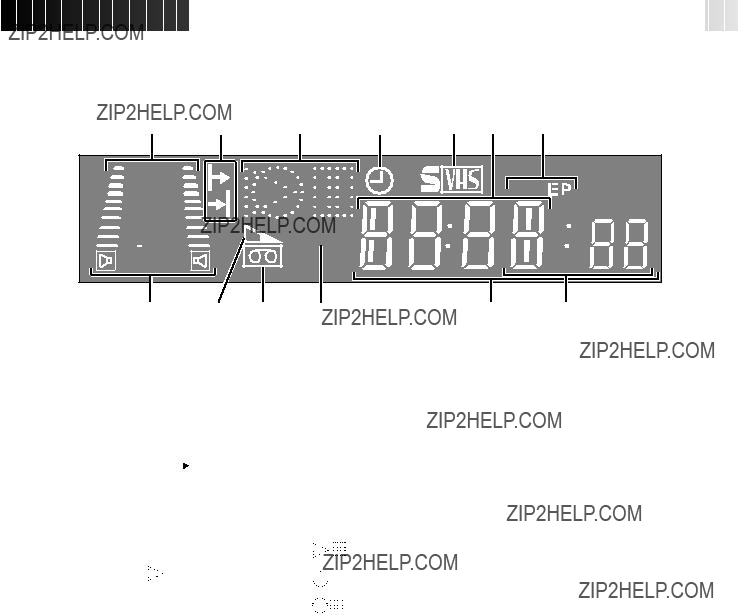
1B.E.S.T. Picture System Display lights from bottom to top while B.E.S.T. is active. Z pg. 34
Audio Level Indicator displays audio input and output levels.
2 Programme Time Indicators show the programme start time ( ) and the programme stop time (
) and the programme stop time (
 ) for timer-recording. Z pg. 20
) for timer-recording. Z pg. 20
3 Symbolic Mode Indicators
4"Timer" Indicator lights when ???TIMER (or ??? on remote control) has been pressed to engage Timer mode. Z pg. 19, 21
5S-VHS Indicator lights when a cassette marked S-VHS is inserted with S-VHS mode set to "AUTO", and when an S-VHS-recorded tape is
played back. Z pg. 32, 33
6Channel Display shows preset position where the station currently being received is stored.
Clock Display shows current time. Z pg. 10
7Tape Speed Indicators display mode of record- ing; light during Record or Play mode. (in the S-VHS or VHS mode) Z pg. 14
*EP is only for NTSC playback.
8Audio Mode Indicator displays audio output mode currently selected. Z pg. 38, 39
9 Tape Remaining Time Indicator displays time remaining on tape when certain buttons are pressed. Z pg. 17
0 "Cassette Loaded" Mark lights once a cassette is inserted; remains lit until cassette ejected.
! PDC Indicator lights when PDC has been engaged for timer recording. Z pg. 19, 21
*VPS (Video Programme System) recording is not currently available in the U.K. and not possible with this recorder.
@VCR Indicator lights when the video recorder is in the video mode. At this point, the TV auto- matically enters AV mode. Z pg. 12
#Counter shows time elapsed since playback or recording began.*
With  displayed, shows time remaining from current tape position to end of tape (Z pg. 17). Counter, Preset Position**, Clock and Tape Remaining Time Display appear alternately when DISPLAY (or ??? ???:??? ??? on remote control) is pressed.
displayed, shows time remaining from current tape position to end of tape (Z pg. 17). Counter, Preset Position**, Clock and Tape Remaining Time Display appear alternately when DISPLAY (or ??? ???:??? ??? on remote control) is pressed.
*If the counter exceeds ???20 hours ("???20:00:00"), the display does not show the "???2" of "???20:00:00". In this case, confirm the counter on the TV screen.
**Preset Position is not displayed during playback.
$Mode shows external input mode selected (I-1, L-1, L-2, F-1, S-1 or S-2).
REMOTE CONTROL
1
2
8VPS/PDC DAILY/QTDN. WEEKLY/HEBDO
1LCD Panel indicates which of the recorder, TV and satellite receiver the remote control can currently operate Z pg. 77; is used in the VIDEO Plus+ timer programming Z pg. 18.
2TV Button enables remote control of connected
TV. Z pg. 43, 77
* 3 VCR Button enables remote control of VCR or is
(used for switching A/B code of the remote
qZ pg. 38, 39
w (TV Muting) Button mutes sound of
(TV Muting) Button mutes sound of
t6 NUMBER Keys are used in preset position
iserials. Z pg. 19, 21
W0000 Button resets counter to 0:00:00. Z pg. 17
0  Button accesses Program screens/displays
Button accesses Program screens/displays
Eto check the programme that you have pro-
Y@ START +/??? Button accesses Regular Program screen; inputs programme Start Time. Z pg. 20
#STOP +/??? Button inputs programme Stop Time.
Buttons with a small dot on the left side of the name can also be used to operate your TV. Z pg. 43
Z pg. 20
$ Rewind [REW] Button ??? same as button on recorder. Z pg. 12, 13
%Play Button ??? same as button on recorder. Z pg. 12, 13
^Record Button ??? same as button on recorder. Z pg. 14
&%???Button is used for selection in on-screen menus. Z pg. 33
TV PROG +/??? selects the connected TV's/ satellite receiver's channel. Z pg. 43, 44

*CABLE/SAT Button enables remote control of connected satellite receiver. Z pg. 44, ???Remote Control LCD??? in the right column
(STANDBY/ON 
 Button ??? same as button on recorder.
Button ??? same as button on recorder.
)??? ???:??? ??? (DISPLAY) Button switches display between clock time, tape remaining time, counter readings and preset position*. Z pg. 17
*Preset position is not displayed during playback.
qTV/VCR Button switches connected TV's mode between TV and AV. Z pg. 12
w30 SEC Button initiates a 30-second period of fast-motion playback. Z pg. 37
e  Button transmits entered the PlusCode number to the recorder. Z pg. 18
Button transmits entered the PlusCode number to the recorder. Z pg. 18
rWEEKLY Button enables timer recording of weekly serials. Z pg. 19, 21
t???(TIMER) Button ??? same as ???TIMER button on recorder. Z pg. 19, 21
yAUX Button selects recorder's auxiliary input mode. Z pg. 46, 48, 51
u MENU Button accesses Menu screen. Z pg. 33
iAuto Tracking Button (
 ) enables/disables auto tracking mode during playback Z pg. 36
) enables/disables auto tracking mode during playback Z pg. 36
STD/LS3 (SP/LP) Button selects tape speed.
Z pg. 14
oOK Button ??? same as button on recorder. Z pg. 33
pNAVIGATION Button ??? same as button on recorder. Z pg. 24
QTV PROG +/??? Button ??? same as button on recorder. Z pg. 14
WDATE +/??? Button inputs date of programme for timer recording. Z pg. 20
E Fast Forward [FF] Button ??? same as button on
recorder. Z pg. 12, 13
RStop Button ??? same as button on recorder. Z pg. 12
TPause Button ??? same as button on recorder. Z pg. 13
Y @ #Button initiates functions such as Index Search Z pg. 37, variable-speed search, frame by frame playback. Z pg. 12
TV  +/??? Button controls volume of connected TV. Z pg. 43
+/??? Button controls volume of connected TV. Z pg. 43

























 77
77
How To Use
The remote control can operate most of your video recorder's functions, as well as basic functions of TV sets and satellite receivers of JVC and other brands.
(Z pg. 43, 44)
cPoint the remote control toward the sensor window.
cThe maximum operating distance of the remote control is about 8 m.
NOTES:
cWhen inserting the batteries, be sure to insert in the correct directions as indicated under the battery cover.
cIf the remote control doesn't work properly, remove its batteries, wait a short time, replace the batteries and then try again.
Remote Control LCD
The remote control can operate not only the video recorder but also some of your TV and satellite receiver's functions. The LCD indicates which of these (VIDEO, TV or CABLE/SAT) the remote control can currently operate. When you first purchase the remote control, or after you have just replaced the batteries, VIDEO A (A code) is selected.
1To operate your video recorder, first press the VCR button to set the remote control to the Video mode.
To switch remote control's A/B code, refer to page 42.
2To operate your TV, first press the TV button to set the remote control to the TV mode (Z pg. 43).
3To operate your satellite receiver, first press the CABLE/ SAT button to set the remote control to the Satellite receiver mode (Z pg. 44).
NOTES:
Even if ???TV??? is displayed on the LCD, the following operations can be performed without switching the mode.
cBasic operations for the recorder
After an operation is completed, ???TV??? reappears on the LCD.
cExpress Timer Programming and VIDEO Plus+ Timer Programming operations
To perform a TV operation again, switch to TV mode first.
cAccessing main menu
To perform a TV operation again, switch to TV mode first.
Specifications shown are for SP mode unless otherwise specified.
E.& O.E. Design and specifications subject to change without notice.
VICTOR COMPANY OF JAPAN, LIMITED



















































































 SAFETY
SAFETY FIRST
FIRST




















































































 3
3
 button does not completely shut off mains power from the unit, but switches operating current on and off. "
button does not completely shut off mains power from the unit, but switches operating current on and off. "  " shows electrical power standby and "
" shows electrical power standby and " 

 " shows ON.
" shows ON.








































































 SAFETY
SAFETY FIRST
FIRST (cont.)
(cont.)


 QUICK
QUICK
 SET
SET
 UP
UP GUIDE
GUIDE




































































 5
5 Dear Customer,
Dear Customer, NAVIGATION OK 3
NAVIGATION OK 3




























































 QUICK
QUICK
 SET
SET UP
UP

 GUIDE
GUIDE (cont.)
(cont.)

 Place the recorder on a stable, flat surface.
Place the recorder on a stable, flat surface. JLIP
JLIP


 button on the recorder or on the remote control to turn on the recorder's power before you start the Auto Set Up procedure described on page 8.
button on the recorder or on the remote control to turn on the recorder's power before you start the Auto Set Up procedure described on page 8.











































 7
7


 button on the recorder or on the remote control to turn on the recorder's power before you start the Auto Set Up procedure described on page 8.
button on the recorder or on the remote control to turn on the recorder's power before you start the Auto Set Up procedure described on page 8.




























































 QUICK
QUICK
 SET
SET UP
UP

 GUIDE
GUIDE (cont.)
(cont.)


 button on the recorder or on the remote is pressed to turn on the recorder after the mains power cord has been plugged into a mains outlet.
button on the recorder or on the remote is pressed to turn on the recorder after the mains power cord has been plugged into a mains outlet.
 to turn on the recorder.
to turn on the recorder.





 press any button on the recorder or
press any button on the recorder or  remote control until the display panel shows clock time, "(PR) 1" or
remote control until the display panel shows clock time, "(PR) 1" or " mark on the screen moves from left to right.
" mark on the screen moves from left to right.
 or MENU while Auto Set Up is in progress, Auto Set Up will be inter- rupted; be sure to turn off the recorder power once and
or MENU while Auto Set Up is in progress, Auto Set Up will be inter- rupted; be sure to turn off the recorder power once and
 to turn the power back on in order to
to turn the power back on in order to 



































































 9
9
 or MENU while downloading or set up is in progress, it will be interrupted; be sure to turn off the recorder power once and try again from the beginning.
or MENU while downloading or set up is in progress, it will be interrupted; be sure to turn off the recorder power once and try again from the beginning. (space). The names of some downloaded stations may differ from those on your TV (Z pg. 62).
(space). The names of some downloaded stations may differ from those on your TV (Z pg. 62).
























































 QUICK
QUICK
 SET
SET UP
UP

 GUIDE
GUIDE (cont.)
(cont.)


 T-
T-
 V
V
 LINK
LINK

















































































 11
11





































































 BASIC
BASIC

 OPERATIONS
OPERATIONS


































































































 13
13
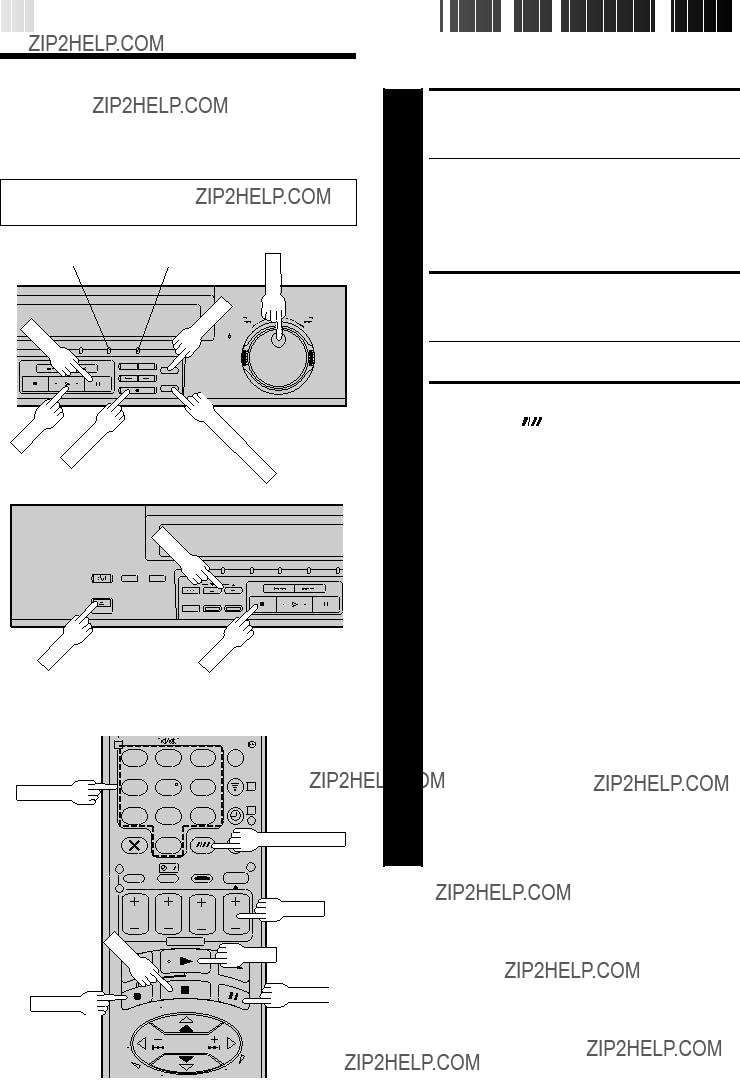




























































 BASIC
BASIC
 OPERATIONS
OPERATIONS (cont.)
(cont.)






















































 15
15





























































 BASIC
BASIC
 OPERATIONS
OPERATIONS (cont.)
(cont.)

 TV PROG
TV PROG " blinks and 0:30 appears on the front display panel.
" blinks and 0:30 appears on the front display panel.




























































 17
17
 " displayed.
" displayed.




























































 BASIC
BASIC
 OPERATIONS
OPERATIONS (cont.)
(cont.)
























 19
19
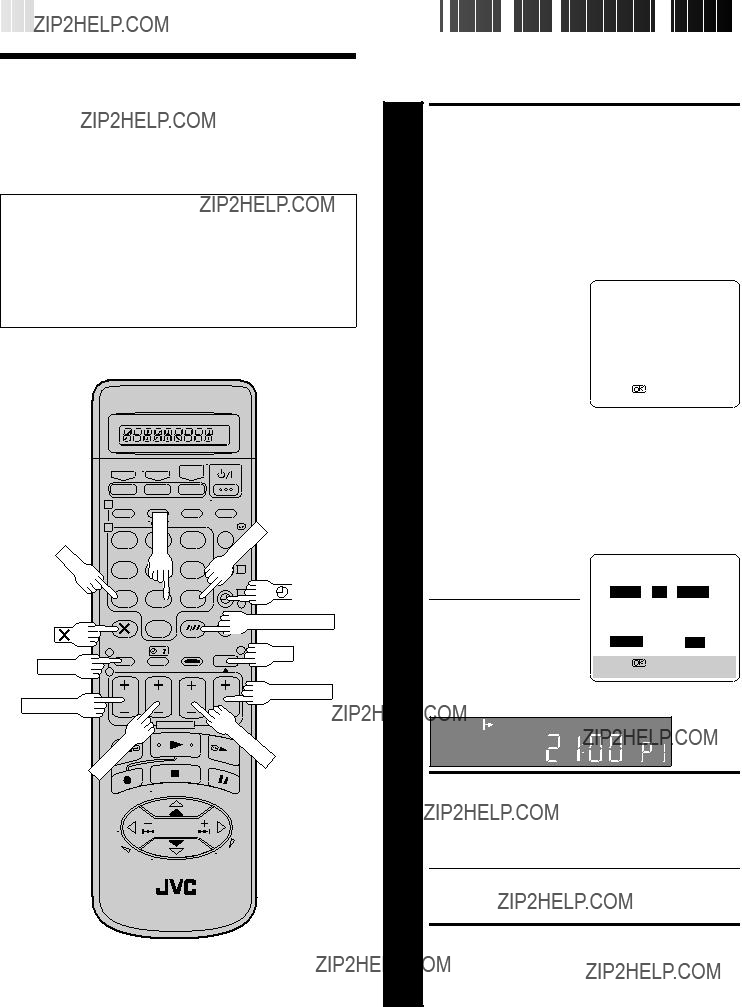




























































 BASIC
BASIC
 OPERATIONS
OPERATIONS (cont.)
(cont.)
























 21
21





























































 BASIC
BASIC
 OPERATIONS
OPERATIONS (cont.)
(cont.)
























































 23
23

 as many times as necessary. If there are still some programmes to be recorded, go on to step 6.
as many times as necessary. If there are still some programmes to be recorded, go on to step 6. TV PROG+/???
TV PROG+/??? DATE+/???
DATE+/???



































































 VIDEO
VIDEO
 NAVIGATION
NAVIGATION












 25
25
 " symbol is displayed for the title that was overwritten.
" symbol is displayed for the title that was overwritten.


























































 VIDEO
VIDEO

 NAVIGATION
NAVIGATION (cont.)
(cont.)

































































































 27
27
 ) twice to enter "
) twice to enter " (space)", then press #.
(space)", then press #. .
.

























































 VIDEO
VIDEO
 NAVIGATION
NAVIGATION (cont.)
(cont.)



























































 29
29



























































 VIDEO
VIDEO NAVIGATION (cont.)
NAVIGATION (cont.)









 31
31






























































 ADVANCED
ADVANCED
 OPERATIONS
OPERATIONS




























































 33
33
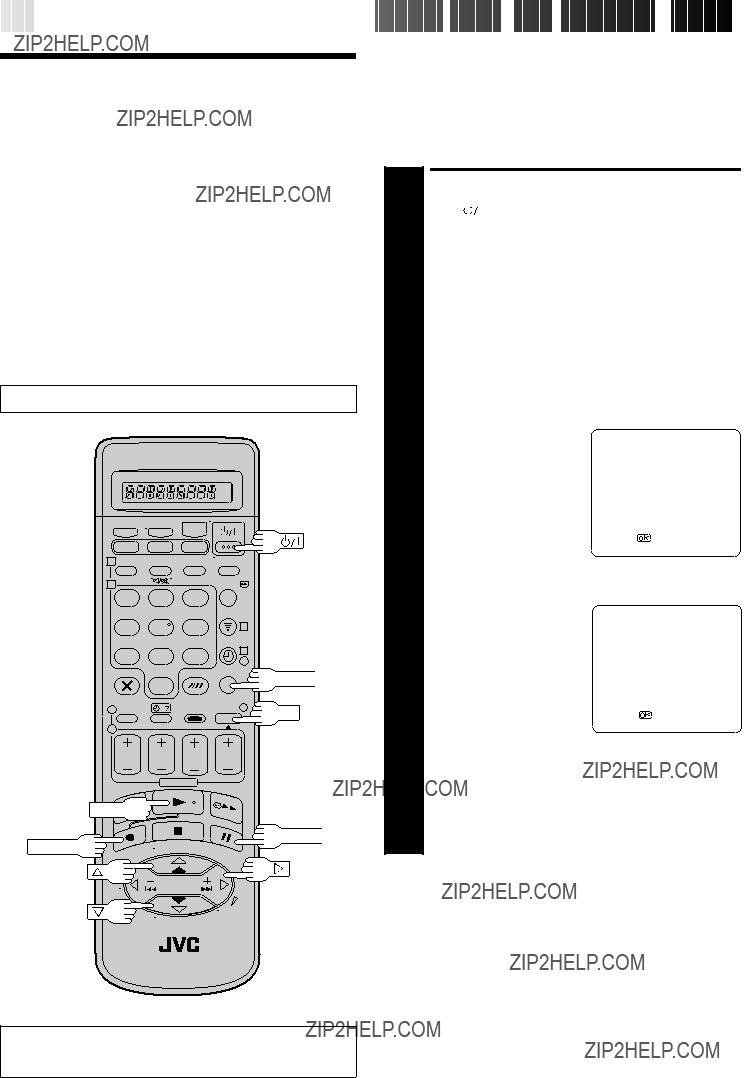


















































 ADVANCED
ADVANCED
 OPERATIONS
OPERATIONS (cont.)
(cont.)




 , PLAY, RECORD, and PAUSE buttons on the recorder have the same function as those on the remote control.
, PLAY, RECORD, and PAUSE buttons on the recorder have the same function as those on the remote control.



























































































































 63
63





















































 SUBSIDIARY
SUBSIDIARY
 INFORMATION
INFORMATION (cont.)
(cont.)















































































 71
71
